Tips
HELPING REFUGEES
A young girl from Somalia who now lives in Central New York is among 1,840 individuals and 800 families who get help from RISE (Refugee & Immigrant Self-Empowerment) in Syracuse. The nonprofit helps refugees navigate the healthcare system and deal with a variety of issues. P.20


EMPOWERING WOMEN

Director of Utica-based Empowered Pathways Stephanie Eghigian discusses how the agency helps women to return to the workforce, and how it helps people in the going through the court systems. P.15
FLU RATES WAY UP
CDC: The hospitalization rate from flu cases is higher than the rate observed at this same point during previous flu seasons. P.7
GIFTS
VHEALT HNEWS.COM DECEMBER 2022 • ISSUE 202 FREE
on choosing the ideal healthy gift for a friend or loved one P. 13 HEALTHY
M
Supplements Flop in Cholesterol Study
Folks taking dietary supplements in tended to help their heart health are just wasting their money, a new clinical trial suggests.
Six supplements widely pro moted as heart-healthy — fish oil, cinnamon, garlic, turmeric, plant sterols and red yeast rice — didn’t do a thing to lower “bad” low-den sity lipoprotein (LDL) cholesterol or improve heart health, researchers found.

“Compared to placebo, none of the supplements had a significant de crease in LDL cholesterol,” said lead researcher, physician Luke Laffin, co-director of the Cleveland Clinic’s Center for Blood Pressure Disorders.
In fact, two of the supple ments made matters worse, Laffin said during a presentation on the findings in November at the Ameri can Heart Association’s annual meet ing, in Chicago. The study findings were published Nov. 6 in the Journal of the American College of Cardiol ogy.
The garlic supplement actually increased LDL cholesterol by nearly 8%, while plant sterols decreased “good” high-density lipoprotein (HDL) cholesterol levels by more than 7%, the results showed.
The clinical trial also demonstrat ed that statins are incredibly effective in lowering cholesterol.
A low dose of cholesterol-lower ing rosuvastatin (Crestor) prompted,
on average, a nearly 38% decrease in bad LDL cholesterol, Laffin said.
“Every participant random ized to rosuvastatin had at least an 18.2% reduction in LDL cholesterol, with half receiving over 40% re duction in LDL cholesterol,” Laffin said. “Whereas with all the sup plements and placebo, you might as well flip a coin in terms of is your LDL cholesterol going to go down or is it going to go up.”
The statin also caused none of the side effects usually cited by peo ple reluctant to take the meds.
“There were no musculoskeletal complaints, no neurological com plaints, no significant elevation in liv er function tests and no meaningful change in glucose as well,“ Laffin added. “So very, very safe.”
Laffin said he used the findings just last week in a conversation with a man who was taking three or four of these supplements as well as a statin.
“I said, why are you taking this? Why are you taking that? And he said, ‘well, you know, one of my buddies in the locker room told me about it,’” Laffin said. “I said, well, you don’t have to. It’s not doing anything. And he turned to his wife and said, ‘OK, I guess you were right, honey.’”
Supplements are a nearly $50 billion industry in the United States, and about one in every five people
using supplements take them to promote heart health or lower their cholesterol, Laffin said.
To see whether these supple ments make any difference, Laffin and his colleagues randomly as signed about 200 people aged 40 to 75 to take either a low-dose statin, a placebo or one of the six supplements for a month.
On top of the drop in LDL cho lesterol, the statin wound up caus ing an average 24% decrease in total cholesterol and a 19% decrease in tri glycerides as well. None of the dietary supplements had any effect on these cholesterol measures.
Dietary supplements are poorly regulated in the United States, and people taking them run the risk of having a dangerous interaction with one of their prescribed medications, Laffin added.
“Cardiologists, primary care phy sicians and others really need to use
these results to have evidence-based discussions with patients. This is a $50 billion a year industry where our patients aren’t getting benefit,” Laffin noted.
But the Council for Respon sible Nutrition, which represents supplement makers, took issue with the findings.
The study “completely misses the point of supplementation by comparing the effects of a prescrip tion drug to dietary supplements in a short-term study. Dietary supple ments are not intended to be quick fixes and their effects may not be revealed during the course of a study that only spans four weeks, partic ularly on a multifactorial condition like high cholesterol. This is a major — and author-acknowledged — lim itation of the study,” Andrea Wong, senior vice president of Scientific and Regulatory Affairs at the council, said in a statement.
BENEFITS
Along with the Blue Cross Blue Shield Association, we’re committed to reducing maternal health disparities by 50% in 5 years. That’s why we’re excited to award $1 million across 8 organizations helping combat racial and ethnic maternal health disparities in our local communities. A big congratulations to the recipients of the Member and Community Health Improvement grants.
• Child & Family Resources: Supporting expecting moms and new parents
• Mount Hope Family Center: Assisting teen moms with mental health, parenting, child development, and trauma support

• Contract Community Services: 24/7 telephonic hospital follow-up support, helping with perinatal and postpartum care
• Integrated Community Alternatives Network: Comprehensive prenatal and postpartum care, transitional housing, and community for young homeless women
• Mohawk Valley Health System: Centering pregnancy program to reduce racial disparities in preterm births
• Mothers & Babies Perinatal Network: Providing health and logistical support to new parents through baby’s first year
Page 2 • IN GOOD HEALTH – Mohawk Valley’s Healthcare Newspaper • December 2022 6
‘Heart-Healthy’
nonprofit independent licensee of the Blue Cross Blue Shield Association
When every mom receives the care she needs, EVERYBODY
A
Celebrate these recipients and learn more about their work at ExcellusBCBS.com/Community
Half of Dentists Say Patients Are Coming to Appointments While High

More and more nervous pa tients are showing up stoned for dental appointments, often forcing dentists to postpone treatment until the patient sobers up, new survey data shows.
As more states are legaliz ing marijuana, more than half of dentists (52%) report seeing patients high on weed or other drugs, a new survey from the American Dental Association (ADA) found.
“In my practice, I’m seeing more patients who are openly dis closing marijuana use,” said ADA spokeswoman Tricia Quartey, a dentist.
Many use marijuana to relax before an appointment, but being high can limit the care dentists can give and result in procedures being postponed, Quartey added.
“When somebody is under the influence, oftentimes we need to give more anesthesia or we may have difficulty with anesthesia,” Quartey said. “If you can’t get somebody fully numb, it’s not exactly creating the same experience and lessening the anxiety. You have to stop a visit
and send somebody home.”
The survey found 56% of dentists did just that, stating that they limit treatment while patients are high.
The data were gleaned from two online surveys, which included over 550 dentists across the United States and just over 1,000 patients. Among patients, the second survey found that 39% said they used marijuana. In addition, 25% of patients said they vaped, and of those respondents, 51% vaped marijuana.
Quartey said dentists should ask their patients if they use marijuana, and patients should discuss their marijuana use with their dentist. The ADA survey found that 67% of pa tients are comfortable talking to their dentist about marijuana.
“The advice to patients is to not use marijuana prior to an appoint ment,” Quartey said. “You think it’s going to reduce anxiety and it’s not. But if you do, inform your dentist so they can be fully aware of what is going on at the appointment. You should also be aware that the dentist oftentimes cancels the appointment.”
SERVING ONEIDA, HERKIMER, & MADISON COUNTIES
A monthly newspaper published by Local News, Inc. 20,000 copies distributed. To request home delivery ($21 per year), call 315-749-7070.


In Good Health is published 12 times a year by Local News, Inc. © 2022 by Local News, Inc. All rights reserved. 4 Riverside Drive, Suite 251, Utica, NY 13502
Phone: 315-749-7070 • Email: IGHmohawkvalley@gmail.com
December 2022 • IN GOOD HEALTH – Mohawk Valley’s Healthcare Newspaper • Page 3 HOW CAN NY CONNECTS HELP?
For answers to all your questions Contact us at 800-342-9871 or call one of the NY Connects partnering agencies at
You may also look for services and support at
Free, easy, local access to information and assistance about long term care services and supports… regardless of age, income, or payor source. Get help with community services/supports designed to help people remain healthy and independent for Older Adults, Adults or Children with Disabilities as well as their Families and Caregivers.
(800) 342-9871 of MADISON COUNTY (315) 697-3092 (315) 697-5700
315-697-5700
www.nyconnects.ny.gov
No material may be reproduced in whole or in part from this publication without the express written permission of the publisher. The information in this publication is intended to complement — not to take the place of — the recommendations of your health provider. Editor & Publisher: Wagner Dotto Contributing Writers: Barbara Pierce, Deb Dittner, Gwenn Voelckers, David Podos, Deborah Jeanne Sergeant, Anne Palumbo, Daniel Baldwin • Advertising: Amy Gagliano Layout & Design: Angel Campos-Toro • Office Manager: Ahme Cruz
Can Sex Trigger an Asthma Attack?
Much like intense exercise, vigorous sex can trigger an asth ma attack in folks with the chronic lung disease, according to new research.
“There is a lack of cur rent literature available on the prevalence of sexual intercourse presenting as exercise-induced asthma,” said study author, physician Ariel Leung, chief in ternal medicine resident at Saint Agnes Medical Center in Fresno, California.
This could be because sex isn’t always the easiest topic to broach with your doctor.
“When sexual intercourse-in duced asthma is properly identified and treated, allergists are placed in a position where they can improve their patients’ quality of life and even their marriages,” Leung said.
When it comes to the risk of having an asthma attack, vig orous sex is akin to walking up two flights of stairs, she noted.
The same measures that keep asthma at bay during ex ercise can also help stave off a sex-induced asthma attack.
“We recommend that pa tients take their short-acting beta agonist inhaler 30 minutes prior to sexual intercourse to prevent an asthma attack,” Leung said. “Some patients might think it takes away from the romance, but nothing is more romantic than taking care of yourself and not having your partner observe an asthma attack.”
The wheezing, cough ing, shortness of breath and chest tightness that are hallmarks of an asthma attack are caused by inflammation that narrows air ways. It can’t be cured but it can be managed.
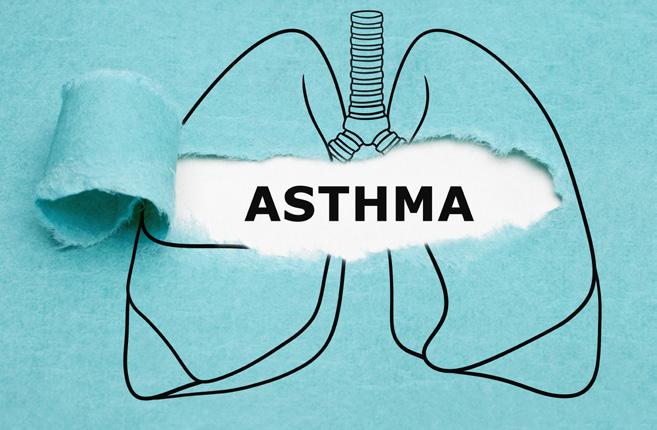
Along with taking med ication as directed, a healthy lifestyle that includes regular ex ercise and eating well can also help keep asthma symptoms at bay, Leung said.
For the new study, the researchers searched medical literature for articles on sex as a trigger for asthma attacks using keywords such as “sexual inter course,” “honeymoon asthma,” “sexual behavior and allergy,” and “allergic reaction.”
Other than a few case stud ies, they didn’t find much. They did, however, find more research on the risk of allergic reactions and asthma flares from semen or latex condoms.
The research was present ed recently at a meeting of the American College of Allergy, Asthma, and Immunology (ACAAI), in Louisville. Findings presented at medical meetings should be considered prelim inary until published in a peer-reviewed journal.
Meet Your Doctor
By Chris Motola
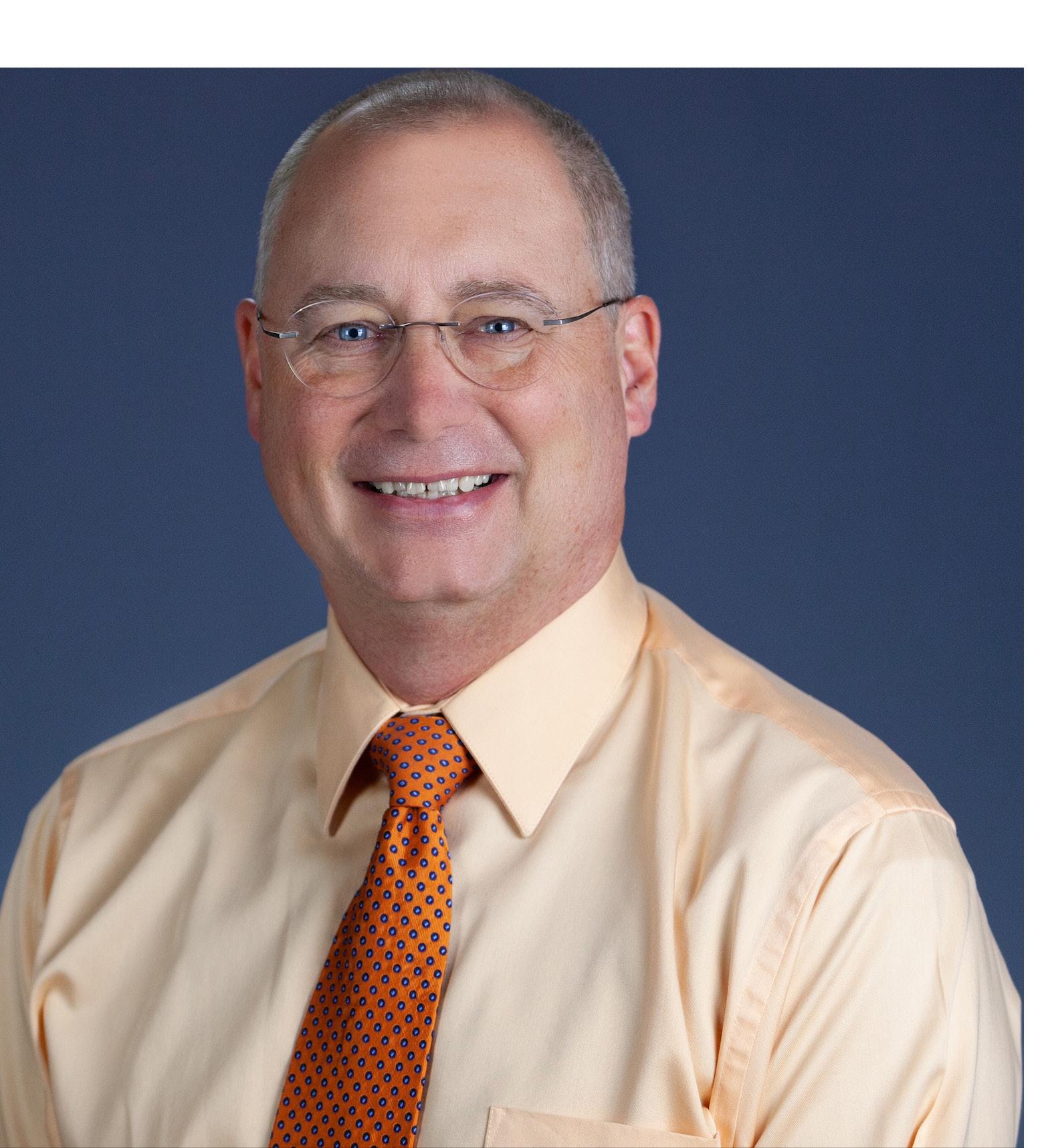
Christopher Black, M.D.
Loretto’s new medical director has roots in the Army, emergency medicine, once served as battalion surgeon in Operation Enduring Freedom in Kandahar, Afghanistan
Q: Are you currently serving as medical director at Loretto or is that forthcoming?
A: I actually started as medical director a few months ago when the previous medical director retired. I was referred for the job.
Q: What’s your medical back ground?
A: I’m trained as a family phy sician and have worked in a family practice environment for most of my career. But I’ve also worked in emer gency medicine most of my career. I was in the Army for 26 years. As a family physician you see the geriatric population along with all the other groups. I hadn’t actually been think ing about long-term care medicine until I moved here to Syracuse and Joel Amidon, the previous medical director and long-time friend of the family, contacted me and said he needed some help. So I started work ing less ER and more long-term care. And then he decided he was going to retire and they referred me for the job.
Q: Did you always want to take on an administrative role or did you more fall into it?
A: No, actually, I kind of fell into it. I did a lot of administrative stuff when I was in the Army and I pretty
Q: You have a lot of military expe rience. How much of that is transfer able to administration and healthcare in the civilian sector?
A: The standard of care and prac tice in military medicine is actually the same. What’s different is wearing the uniform and going where you’re told to go instead of where you want to go. And there’s the hierarchy of rank. But as far as practicing medi cine itself, not much is different.
Q: Does that include organization al procedures?
A: That’s actually not very differ ent either. They have different names for the titles. But there’s the same kind of administrative structure in the military and civilian world. One thing that’s different is the relation ships are a little different.
Q: What’s your assessment of where Loretto is at right now? What do you think needs to change?
A: Well, Loretto’s in a very good place right now. We just had a state inspection that we did very well on. There were no medical deficiencies and the deficiencies they found were all minor things like food tempera ture and some housekeeping things. Nothing really terrible. Doesn’t mean we don’t have anything to work on, but we’re in a good place. We did a
visitors have to wear masks. Other than non-residents having to wear masks, we’re back to full activities. Residents don’t have to wear masks.
Q: Are COVID-19-related deaths down?
A: We do still have cases of COVID-19, and we have a floor for our COVID-19 unit. But the people are almost all vaccinated and aren’t dying from it like they were. It’s rare for them even have serious symp toms.
Q: I see that you’re also an adjunct assistant clinical professor at Touro College of Osteopathic Medicine. As an M.D. training D.O.s do you find there’s much of a philosophical difference to overcome?
A: The place where I do my ER work is over in Oneida and the Touro students do rotations through Oneida in all the different clinical areas. I supervise them in the ER. We don’t treat them any differently and I don’t see too many differences. The main difference is they learn how to do osteopathic manipulation therapy. But if they’re a pulmonologist, the osteopathic manipulation isn’t much part of their practice. So I don’t think there’s much of a point differentiat ing between us.
Q: What would you like your signature accomplishment as medical director to be?
A: I don’t know if it would be a signature accomplishment, but one of the things we’re constantly working on is making sure we’re getting our medical notes in for admissions, making sure there’s really good com munication between nurses and med ical staff. I tell everybody they can call me anytime for any reason if they have any concerns, and I want the rest of the medical staff to practice the same way. We’re always working on falls. Falls are a constant issue in nursing homes for two reasons. Some of the patients forget that they can’t walk and try to walk. Others are in a hurry to get to the bathroom and are willing to wait for help. We want to keep people healthy and improve them while they’re here instead of having them decline and have to go back to the hospital. So we work on ways to make sure we stay on top of that and decrease our hospitaliza tions. We have a unit called the RCU, the Restorative Care Unit, which has more RN support and the ability to do cardiovascular monitoring. So we can use that unit to help patients avoid re-hospitalization. Those are really the things I’m working on.
Lifelines
Name: Christopher Black, M.D., FAAFP

Position: Medical Director of Loretto Health & Rehabilitation
Hometown: Worcester, Massachusetts.
Lives in Manlius
Education: F. Edward Herbert School of Medicine
Affiliations: Oneida Hospital
Career: Battalion Surgeon in Operation Enduring Freedom in Kandahar, Afghanistan
Organizations: American Academy of Family Physicians; American Board of Family Medicine
Family: Wife, five children
Hobbies: Watching sports; reading fiction
Page 4 • IN GOOD HEALTH – Mohawk Valley’s Healthcare Newspaper • December 2022




December 2022 • IN GOOD HEALTH – Mohawk Valley’s Healthcare Newspaper • Page 5 Bring Your Passion to Crouse… Today! UP TO $45,000 EXPERIENCED RN SIGN-ON BONUS • RELOCATION • LOAN PAYBACK UP TO $25,000 NEW GRAD RN
MD, FACS Breast Surgeon
Mary
Ellen Greco,
PA-C Breast
Experienced Breast Surgeon Roswell Park Cancer Network Affiliate Advanced Imaging Technology Oneida Health is excited to welcome Dr. Mary Ellen Greco MD, FACS and Kristen McNeil, PA-C to our new Breast Care Program. Breast Care Program New In Oneida 301 Genesee St, Suite B • Oneida Breast Care NOW ACCEPTING PATIENTS 315-606-2768
Kristen A. McNeil,
Specialist
20 MOST OBESE STATES in America

HealthcareinaMinute
By George W. Chapman
Competition in Healthcare.
Why
FTC
Opposed
to Upstate-Crouse Merger Proposal
The Federal Trade Commission (FTC) recently opposed the Certificate of Public Advan tage (COPA) proposed by Syracuse hospitals Upstate Medical University and Crouse Health. The COPA would allow the two hospitals to merge and shield them from federal anti-trust laws. The FTC argued the proposed merger would reduce competition, raise prices, lower quality and de press wages.
The FTC said their research bears this out. I’m sure there is plenty of re search that shows without merging, several financially strapped hospitals would have closed altogether. For rural and even suburban commu nities, a closure results in NO care, NO wages, NO emergency room and longer drives for care.
Ironically, rather than saving a distressed hospital via merger, an aggressive, predatory hospital could just let it fail, resulting in less compe tition. Upstate and Crouse are liter ally across the street from each other, so no outlying community would suffer if Crouse closed.
However, the overall Central New York community needs the beds. Upstate is chock full. So why would the FTC oppose the COPA merger?
If Crouse were to close, Upstate would most likely purchase the assets and hire back the staff. The quality of care would at least be maintained, if not improved. There is still local competition with Trinity Health, which is part of a 95-hospital conglomerate. The FTC fears prices will rise. Wrong. Medicare and Med
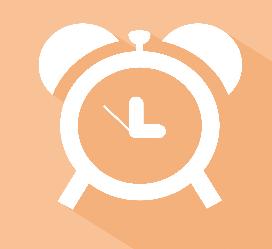
Virtual Care Satisfaction
A Harris poll of 5,000 adults found 94% of those who used virtual
icaid set what they pay prospectively. There is no negotiating. There are enough commercial insurers in town to keep the newly merged entity from flexing their market share. Rais ing “prices” has virtually no impact on hospital revenue when 90% of their revenues are controlled.
In the end, Upstate and Crouse will merge.
To put this potential merger into perspective, Louisiana-based LCMC is planning to purchase three Tu lane University hospitals (currently owned by HCA Healthcare). The local nurse unions are opposing the mega merger which would reduce competition to two huge systems.



When it comes to “competition,” the FTC might want to focus LESS on hospitals merging just to survive and MORE on the lack of choice in most markets when it comes to commer cial insurance options. 80% of all U.S. markets range from NO competition to LOW competition among commer cial carriers. Just five carriers control more than 70% of the commercial insurance market, which includes employer, individual and Advan tage plans. They are: United Health, which controls 28% of the market with $5.3 billion profit in third quar ter 2022; Humana, 19%; Aetna/CVS Health, 11% with revenues of $238.6 billion third quarter; Kaiser Perma nente, 7%; and Anthem/Elevance, 6%. And when insurers dominate a market, they can unilaterally raise prices for their commercial products. (In New York, insurer commercial premium increases are reviewed and approved by the NYSDOH.)
primary care (telehealth) were satis fied with their experience and 79% felt they had a greater role in manag ing their health. The poll found that
about half of the respondents weren’t sure what the term “virtual primary care” meant, indicating providers and insurers need to do a better job of communicating the service. How ever, other surveys have revealed telehealth usage declined from 78% in 2021 to 45% in 2022 among re spondents. This had more to do with personal preference than dissatisfac tion. Younger adults were more likely to seek care from non traditional pro viders, like retail clinics, showing less loyalty to specific providers. Younger adults, feeling more impacted by the pandemic, were more likely to seek virtual mental health services.
Misleading Advantage Plan Marketing
This time of the year, seniors are bombarded with cold calls, texts, emails and mailers from agents and brokers hawking their Advantage plan. And all of us are subject to the ubiquitous TV ads. (Thankfully, open enrollment ends in December.) Ten states have reported to CMS a surge in consumer complaints about ag gressive, misleading, confusing and even fraudulent marketing. Seniors have been duped into changing plans after being told their provider may no longer participate in their cur rent plan or they will be eligible for an increase in their Social Security check. Some marketing materials are made to look like official government documents. Consequentially, a Senate committee is considering stricter marketing rules including prior ap proval of all TV ads, (can they do that for political ads, please?), banning cold calls and holding insurance companies liable for the actions of their brokers and agents. Half of all Medicare members belong to an Advantage plan.
Lobbying Surges
Over the past 20 years, industry stakeholders increased their lobbying expenses 70% from $358 million in 2000 to $714 million in 2020. In 2020
the breakdown among the four major stakeholders was drug manufactur ers $308M, providers $287M, insur ance/payers $81M and other firms (consulting, policy) $35M. As usual, drug manufacturers lead the pack. They have the largest profits and have most to lose. The last thing they want is to be subjected to congres sional price controls like physicians and hospitals. Providers are lobbying to virtually stay afloat. Hundreds of hospitals have closed in the past 20 years and most surviving hospitals are operating in the red or with razor thin operating margins. Physicians are facing a 4.4% cut in their Medi care payments next year.
If Congress is Flipped



As of this writing, Congress is controlled by the Democrats. Odds were Republicans would take the House election day. Assuming they did, what would change in healthcare? Experts see four areas of concern. First, they expect an oversight committee to scrutinize the implementation of the Inflation Reduction Act which finally gives Medicare the right to negotiate drug prices with manufacturers. Second, Congress could limit the expansion of Medicaid and related premium subsidies under the Affordable Care Act. Third, Congress could discontin ue telehealth flexibility for Medicare recipients. Fourth, and most contro versial, disrupting women’s repro ductive healthcare.
W.
a healthcare busi ness consultant who works exclusively with physicians, hos pitals and healthcare organizations. He op erates GW Chapman Consulting based in Syracuse. Email him at gwc@gwchapman consulting.com.

Page 6 • IN GOOD HEALTH – Mohawk Valley’s Healthcare Newspaper • December 2022
George
Chapman is
1. West Virginia 2. Mississippi 3. Kentucky 4. Arkansas 5. Alabama 6. Tennessee 7. Louisiana 8. Delaware 9. Oklahoma 10. South Carolina 11. Georgia 12. Texas 13. Ohio 14. Missouri 15. North Carolina 16. Iowa 17. Kansas 18. Michigan 19. Indiana 20. Virginia
The personal-finance website WalletHub in November released its report on 2022’s Most Overweight & Obese States in America, as well as accompanying videos and expert commentary. To determine which states contribute the most to America’s overweight and obesity problem, WalletHub compared the 50 states and the District of Columbia across 31 key metrics. They range from the share of overweight and obese population to sugary-beverage consumption among adolescents to obesityrelated health care costs.
Hospitalizations From Flu Are Highest in Over a Decade
The hospitalization rate from flu cases at this point in the year is higher than the rate observed at this same point during previous flu seasons going back to 2010-2011, according to the Centers for Disease Control and Prevention. As of late October, influenza tracking by the CDC shows at least 880,000 illness es, 6,900 hospitalizations, and 360 deaths.
“We need to take flu seriously, especially when it comes to older adults, young children, pregnant women, nursing home residents, and people with asthma, lung disease, heart disease, diabetes, or obesity,” says physician Lorna Fitzpatrick, vice president of medical affairs and
senior medical director at Excellus BlueCross BlueShield. The 2021-2022 flu season saw an estimated 9 million flu illnesses, 4 million flu-related medical visits, 100,000 flu-related hospitalizations, and 5,000 flu deaths, according to the CDC. Older adults accounted for 83% of the deaths.

Influenza, or ‘flu’, is a contagious respiratory illness caused by influ enza viruses. Flu season typically begins in October, peaks in February, and continues until May. Last season, activity began to increase in Novem ber and remained elevated until midJune. According to Fitzpatrick, most people who get the flu have mild illness and recover, without medical care, in less than two weeks. Some

people in high-risk groups are more likely to develop flu-related compli cations.

Vaccination helps prevent in fection and can also prevent serious outcomes in vaccinated people who still get sick with flu. The CDC rec ommends everyone ageD 6 months and older gets a flu vaccine annually.
“Last flu season, about half (51.4%) of eligible individuals received the flu vaccine, which is simply too few,” says Fitzpatrick. Vaccination rates vary by race. Last season, 54.6% of those vaccinated were white, 45.0% were Hispanic, and 44.5% were black.
Flu vaccinations are available at nearly every neighborhood and
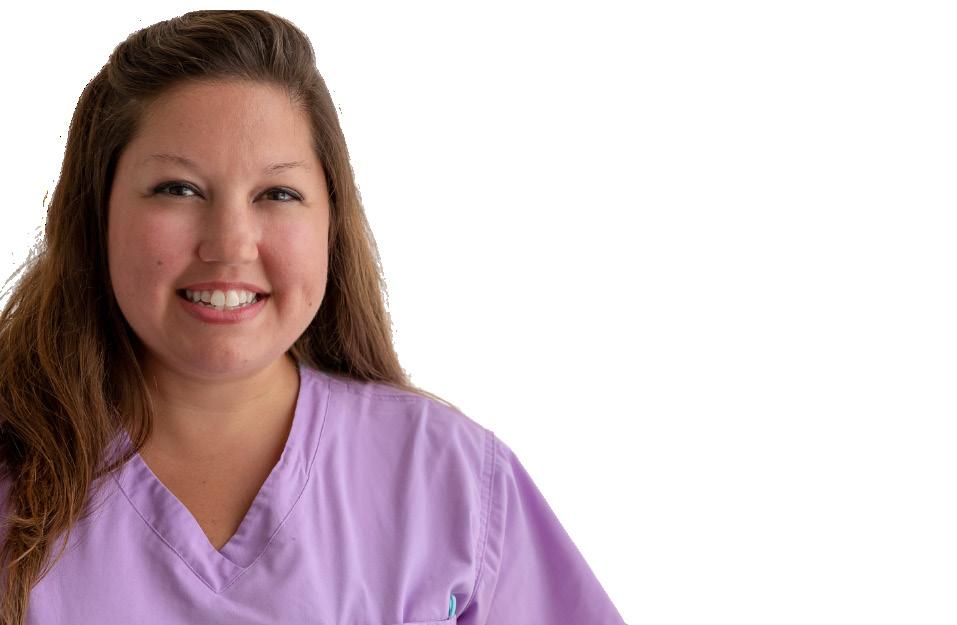

grocery store pharmacy, and at many medical practices. Vaccine supplies are plentiful — manufacturers project they will supply the U.S. with as many as 183 million doses. All will be quadrivalent (four component). New this season, is a recommendation for the use of higher dose and adjuvant ed flu vaccines in people ageD 65 and older over the standard dose, unadju vanted flu vaccines.
“Consult your health care provider if you have any questions about your eligibility to receive the flu vaccine,” advises Fitzpatrick. “While it is never too early or too late in the flu season to get vaccinated, sooner is better as it takes about two weeks for the vaccine to provide protection.”
Find a flu vaccine site near you online by visiting www.Vaccines. gov, and then clicking on “Find Flu Vaccines.”
December 2022 • IN GOOD HEALTH – Mohawk Valley’s Healthcare Newspaper • Page 7
– Lisa Clemmons, RN, BSN, OCN
What’s so special aboutcancer care nursing? Shadow us & we’ll show you! Scan the code to learn why you’ll love joining the HOA nursing team!
“The ongoing relationships I am able to build with my patients at HOA are very special to me. Our patients and dedicated team members keep me coming back to work each day!”
Physician Lorna Fitzpatrick, vice president of medical affairs and senior medical director at Excellus BlueCross BlueShield.
‘Tis the Season: Thoughtful Gift Ideas for Those Who Live Alone
This column is for all of you who have friends or family members who live alone.
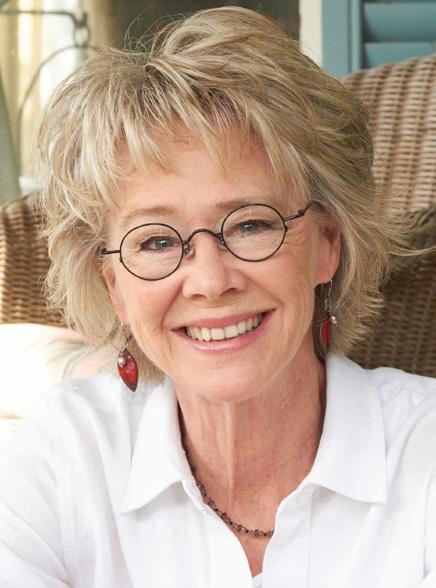
In December, most folks look forward to joyous holiday time filled with family gatherings, laughter, hugs and gift giving.
But not everyone is filled with jubilant anticipation. Those on their own, who may be missing loved ones, often experience feelings of loneliness and anxiety. The holiday blues emerge, which can dampen their holiday spirits.
What can you do to add a little “merry” to the holidays for those who live alone? You can give the gift of time together — probably the most welcome and cherished gift of all.
Below, I’ve compiled a list of gift ideas for you, beginning with gift suggestions that foster togetherness. These suggestions and those that follow are all designed to put a smile on the face of someone who lives alone.
FOR TOGETHERNESS
• A “Be my guest!” gift certificate and tickets to a movie, concert, or theater production. Insist on doing the driving.
• A bottle of Champagne and invitation to join you (and perhaps
a few friends) for a New Year’s Eve get-together. This can be a challenging night for those who are newly divorced or widowed.
Years ago, after my divorce, I popped the cork with my sister and her husband. I was deeply grateful for their invitation to spend the evening together. It got my New Year off to a great start!
• Gift of Time coupons for time together doing things you think your friend or family member would enjoy. Here are a few ideas:
– Baking cookies together
– Go bowling – Lunch and shoe shopping – A sporting event or fishing adventure
– An afternoon of antiquing – A walk, hike, or bike ride
– Hands-on help with organizing a closet
– A visit to a local botanical garden
– Drinks at a nearby “watering hole” with permission to complain for hours. Ha!
My sister gave me that final coupon last Christmas. It was one of my favorites.
These gifts of time together are precious. Be creative. Keep it personal. And know that the gift of your company will be deeply appreciated and remembered long
after the holidays are behind us.
FOR PERSONAL ENJOYMENT AND
PAMPERING
• A subscription to online lessons, classes, workshops, and tutorials. Do you have a single friend who aspires to play the piano? Check out online music lessons. A divorced sister who eats supper directly from the take-out container? Consider a cooking class. Or a widowed mother interested in life-long learning? A continuing education course might delight her. There are so many possibilities!
• An opportunity to be “treated like royalty.” How many of your friends who live alone indulge themselves in luxury services? My guess is not many, if they’re like me. But that’s what makes this the perfect gift!
Why not surprise her with a spa certificate for a massage, facial, manicure, or pedicure? Or make his day with a certificate for a gentleman’s facial or deep tissue or sports massage?
• For women who live alone – fresh flowers delivered. Do you know a single woman who lives by herself? When’s the last time she got flowers? It’s probably been years . . . don’t I know it.
Consider sending a bouquet of roses or tulips red for love, yellow for friendship, pink for appreciation, and white for sympathy.
• And speaking of deliveries, check out Gift-of-the-Month clubs. Coming home alone at any time of year can feel a little empty, but it can really feel lonely during the winter months. Discovering a package on the doorstep can change everything.
Go online and check out gourmet gifts and food clubs. You won’t believe the variety of delicious items that can be delivered on a monthly basis: chocolates, hot sauce, cheese, tea, cigars, wine, beer, pastas, olive oil, cookies, popcorn, pancakes, or entire meals. I love this idea so much
I might treat myself.
FOR SAFETY
• An AAA membership. I don’t leave home without it. A flat tire, an empty tank, a lost key I’ve been there. AAA has saved the day!
• Handy tools and supplies for emergencies or life’s unexpected moments. Consider a compact “nobattery” wind-up flashlight-radio with a hand crank. Or a Johnson & Johnson All-Purpose First Aid Kit.
• How about a Swiss Army knife, complete with a screwdriver, scissors, toothpick, and tweezers? It even comes with a nail file and corkscrew.
• A front-entrance motion sensor light that will illuminate your front porch after the sun goes down. This energy-saving device will light the way for visitors (or a new suitor?) and may also scare off intruders and critters. Those who live alone will appreciate the peace of mind.
• A gift certificate for car washes. While not necessarily a “safety gift,” I always feel better when my car is clean (and that can’t help but make me safer on the road). Who doesn’t enjoy a clean, sparkling car? Choose a car wash near your recipient’s home or work place.
FOR INSPIRATION
• A donation to a good cause. Making a charitable contribution in someone’s name is a gift you can both feel good about. Think about your friend or family member who lives alone. What do they care about? Choose an organization that supports his or her values.
• A subscription to “In Good Health” or “55 Plus” produced by editor and publisher Wagner Dotto. Both periodicals are filled with inspirational articles and trusted health information. Consider a gift subscription for someone you love. Chances are good your holidays and theirs will be the healthier and happier for it.
Infant Head-Shaping Pillows Are Useless and Dangerous to Baby, FDA Warns

Infant head-shaping pillows are not approved by the U.S. Food and Drug Administration and should not be used, the agency warned early November.
The pillows can create an un safe sleep environment for infants, potentially contributing to the risk of suffocation and death.
Marketed as changing an infant’s head shape or symmetry or claiming to treat other medical conditions, they have no demonstrated benefit, the agency said in a news release.
“If you own an infant head-shap ing pillow, throw it away; do not donate or give it to anyone else,”
the alert said. “Be aware that infant head shaping pillows are not safe or effective for preventing or treating flat head syndrome or other medical conditions.”
In most cases, flat head syn drome will go away on its own as an infant grows up, the FDA said. It is not painful and it does not cause any developmental concerns. Using a head-shaping pillow may delay necessary medical evaluations and mask something more serious, such as craniosynostosis, where a develop ing infant’s skull bones join together too early.
The U.S. National Institutes of
Health and the American Acade my of Pediatrics both recommend infants sleep on their backs in a bare crib on a flat — not inclined — surface without pillows, toys, soft objects or loose bedding.
These recommendations are intended to help reduce the risk of Sudden Unexpected Infant Death (SUID), a category that includes Sud den Infant Death Syndrome (SIDS).
Health care providers should dis courage the use of infant head-shap ing pillows and educate their patients about the risks, the FDA added.
Infant head-shaping pillows are typically small, with an indent or hole in the center designed to cradle the back of an infant’s head while the infant lays face up.
Some do not have the indent and are rectangular-shaped.
The FDA has cleared caps, hel mets or head bands to improve head symmetry or shape in infants and toddlers from 3 months to 18 months of age.
Some devices are also intended for infants from 3 to 18 months of age whose head shape has been surgi cally corrected, but who still have a moderate-to-severe flat head, the FDA said.
The agency said it has communi cated its concerns about promotional materials to companies that make these pillows and will continue to monitor claims for these products.
Any questions can be sent by email to the Division of Industry and Consumer Education (DICE) at dice@ fda.hhs.gov or asked by calling 800638-2041 or 301-796-7100.
Page 8 • IN GOOD HEALTH –
Healthcare Newspaper • December 2022
Mohawk Valley’s
Live Alone & Thrive
Practical tips, advice and hope for those who live alone
By Gwenn Voelckers
The Miracle of William ‘Bill’ Gerard Jr.
How a Utica man turned his life around, after an early life filled with drugs and alcohol
By David Podos
Iremember the first time I saw Bill Gerard Jr. It was in the Learning Commons of Mohawk Valley Community College in Utica. I was at that time, a professional tutor, working part-time in the Commons. I quickly noticed his many tattoos, his motorcycle jacket nonchalantly thrown over his shoulder, his long hair and grizzly beard. The Utica resident walked liked a man on a mission. While I made my best guess that he was about 5’6” you would have thought he was 6’5”.
I also remember the first time we spoke. It was at the copier. He just turned and said “good morning” his smile infectious, his morning greet ing sincere and after introductions, he shook my hand and said he was glad to meet me. And, you could tell he meant it.
That was more than three years ago and I can still feel that hand shake, firm, honest and meaningful.
Bill was born in Brooklyn and grew up in what he says was a “won derful family with four siblings” along with his mother and father. They were a solid middle class fam ily, “we were all well-provided for and our parents instilled in us a good work ethic.”
In fact, when Bill reached the age of 16, he was already holding down a full-time job in an automobile repair
facility.
On the outside most people would think that Bill was just a chip off the old block, a good hard-work ing kid from a respectable and main stream family, who most likely had little or no worries and or problems. But that was far from the truth.
It began at the tender age of 10.
“I started drinking at the age of 10 for affect, but I wanted more, so at the age of 13 when I was finishing grammar school, going into high school, all bets were off. As I moved into and through my teen years there was constant partying, a lot of drink ing, a lot of drugs.”
His first arrest was at age 16 for underage drinking in a local bar.
“We always drank at bars when we were 15, 16, 17 years old. I got my first DWI in 1986 and from 1986 – 2006 I was arrested seven times for DWI and possession of illegal fire arms, (I lost my right to carry legal firearms back in 1986 when I had my first DWI”).
On Sept. 4, 2006, Bill was run over by a hit and run driver while riding his motorcycle in Queens, suffering major injuries. He was also drunk and was arrested for DWI once the police arrived at the scene.
When Bill eventually appeared before the court for his most current DWI charge the judge knew him
quite well, and threw the proverbial book at him. Since Bill was wellknown in the court system for his prior arrests and being his rap sheet was now quite infamous, he received a three-year prison sentence, of this he served two years in state prison and one year on parole.
While in prison Bill decided to try to figure out what was wrong with him, why he did the things he had done [and] why so early on in his youth. He studied child psychol ogy reading many books on that subject while incarcerated.
He met another fellow inmate and they became friends, each one helping the other to maintain so briety. Bill also ran the AA prison program helping other inmates with their problems with alcohol. After serving his two years and when released, Bill had temporarily won over his demons of alcohol abuse and was sober, but relapsed several times thereafter.

Now he has been completely sober with no relapse of any kind for the past 16 years and drug-free since 1992.
Bill has suffered four motorcycle accidents over the years resulting in 10 surgeries; two of those surgeries were on his spine, all of this resulting in a permanent spinal cord injury. He has been shot and stabbed as well.

In any one’s account of what he has gone through it is a miracle he is alive today and Bill totally agrees.
When asked what was it that got him through all of this trauma he pauses and smiles, then said in his honest, straightforward and mean ingful way — “resiliency, tenacity, a belief that a higher power had bigger plans for me.”
Bill did not believe he would be permanently unable to walk again or ever ride his motorcycle.
“Getting back on that bike was my motivation to getting better, my neuro surgeon wanted me to get back walking I wanted to get back riding — riding is my Zen,” he explained.
Bill has come a long way in turning his life around since being re leased from prison on Aug. 28, 2008.
He has earned an associate degree in science majoring in chem ical dependency practitioner. He is currently attending SUNY Empire College working toward a Bache lor of Science degree in addiction studies.
Once he receives that degree the possibility of going on to graduate school for his masters will be on the table, though he is still uncertain at this time if he will. When asked what his professional goals are he simply said in his firm, honest and meaning ful way, “I just want to help people.”
December 2022 • IN GOOD HEALTH – Mohawk Valley’s Healthcare Newspaper • Page 9
Happy Holidays
Tips for Those Days You Just Can’t Get Out of Bed
By Barbara Pierce
Whether it’s stress, depression, anxiety or lack of sleep, there are times when getting out of bed in the morning feels over whelming. You just can’t do it.

“It happens, especially this time of year, with less sunlight and colder temperatures and the stress of the holidays,” said Jim Davis, CEO, Samaritan Counseling Center of the Mohawk Valley.
Davis offers these suggestions on how to get up and get going when it feels impossible:
• Get into a routine: “Develop a morning routine that you do auto matically,” he suggested. “Set your alarm. When it goes off, don’t hit the snooze button. Instead put your alarm across the room so you have to get out of bed and move to turn it off.”
When you hit the snooze button, the fragmented sleep you get isn’t beneficial for you anyway. And can cause you to feel foggy and tired all day.
Get out of bed at the same time every day, even if you haven’t sleep much during the night, then shower, drink your coffee, eat something. Routine does help; our brains like routine.
Athlete Michael Phelps, the most decorated Olympian of all time, speaks out about his mental health challenges. Sticking with routines, putting emphasis on eating and sleeping well are important for his mental health.
“Whenever I get out of a rou tine, I kind of spiral down,” he said online.
• Moving or exercise is always good for those days you feel down, said Davis. “Even a five-minute walk around the block will give you energy.”
Once you’re in motion, it’s often easier to stay in motion.
• Get outside: If you just can’t walk for even five minutes, start small, just step outside, onto your porch or backyard. Being outside is good for you; sunlight increases the feel-good chemicals in your brain. Sunlight is powerful stuff. Even a few minutes outside can help.
• Connect with others: Being around people is good. Ask a friend to meet you. Or, just go hang around where there are other people; even being around strangers helps. Resist the temptation to isolate yourself.
• “Eat healthy,” continued Davis. “Don’t eat too much, or too little; have a routine that includes meal times, three times a day.”
What you eat does impact on how you feel.
Like an expensive car, your brain functions best when it gets premium fuel.
Researchers found that people who eat a lot of red meat, sweets, potatoes and don’t eat a lot of fruit and vegetables have an increased risk of depression. They aren’t sure which comes first: a poor diet or depression. But they are sure that eating the right food helps.
Consider Vitamin D supple ments; some find they help.
• Music: It’s hard to feel down when you’ve got a tempo beat ing from your speakers. Turn on a
‘SAD Season’: Depression Risks Rise as Days Get Shorter
As the daylight hours shrink, people’s moods can wind up in the tank.
Rest assured, you’re not alone. It’s the SAD season for those affected by seasonal affective disorder. That’s the depression, fatigue and with drawal that shorter days and longer nights often bring.
“The seasonal mood change can come in different shapes and forms,” said physician Dorothy Sit, associate professor of psychiatry and behavior al sciences at Northwestern Univer sity Feinberg School of Medicine in Chicago.
“It can be a clinical diagnosis of depression, which we call SAD, but some people experience a milder form,” Sit said. “The clinical diagno sis means it is quite intense; it affects people all day for many weeks and can impact their functioning. In mild er cases, people can feel a bit blah, but can push through. Still, function ing will feel a bit harder.”
Besides feeling sluggish, people may be hungrier, crave carbohy
drates, eat more and gain weight. They may also feel less motivated and find less enjoyment in activities.
“This is a form of depression that cycles naturally; it starts every fall and winter and remits every spring and summer,” Sit said in a North western Medicine news release.
A major remedy for SAD is start ing the day with bright light therapy. Sit recommends a unit that produces 10,000 LUX of white light to be used in the 30 minutes after waking up.
“The treatment provides an up lift in the mood, improves a person’s functioning and may completely resolve their symptoms,” she noted. “It’s even effective for non season al depression, depression in pregnan cy and in certain people with bipolar depression.”
Sit stressed that it’s important to use the bright light under the direction of a physician or clinician, who can help detect any side effects or problems that arise, and discuss alternatives if needed.
“Light from the sun is the prima
fast–paced sound track. Move to the music if you can, even if all you can do is sway or clap.
• Take one step at a time: If the day feels overwhelming, don’t focus on it. Focus on the moment. Give yourself a “next step” goal. Tell yourself you only need to get to the shower. When you accomplish that, tell yourself you only need to get dressed, then make breakfast.
• Remind yourself: You’ve likely felt this way before. And you over came it. Remind yourself of that. Remember what helped you get through it in the past and try the same things again.
• “Think mind-body-spirt,” suggested Davis. “It’s important to take care of your mind, your body, and your spiritual side. Connect with your spiritual resources.”
“If you’re seriously depressed, feeling hopeless and have no mo tivation, do seek counseling to get you through,” Davis advised. “Talk with a counselor, get medication or a combination.”
Most of us go through days of feeling down, but if you continue
to feel sad and hopeless for weeks or months, you may be seriously depressed. Signs that you may be seriously depressed include feelings of hopelessness — lack of hope that your life will ever get better, than you’ll ever feel better; lack of interest in the things you used to enjoy; irrita bility; using alcohol or drugs to help you get through the day; sleeping too much or too little; eating too much or too little; thoughts of wanting to die.
Some people think depression is trivial and not a genuine health condition. They’re wrong; it’s a real illness with real symptoms. It’s not something you can snap out of or ‘pull yourself together.’
“If you’re in danger of hurting yourself or feel suicidal, call the ‘Mo bile Crisis Assessment Team’ or go to the ER,” said Davis.
The Mobile Crisis Assessment Team is available to anyone seeking crisis intervention services in Onei da, Herkimer, Schoharie, Otsego, Delaware and Chenango counties. Call 315-732-6228 or 844-732-6228, 24 hours a day, seven days a week.
ry regulator that provides the signal for our bodies’ circadian rhythms,” Sit said. “Not having significant ex posure to light can affect that. Bright light therapy is used in a way to am plify our circadian rhythms, which appears to boost our mood. Timing the light so the exposure is first thing in the morning may produce more of an impact to regulate our rhythms. We are still trying to fully understand
how this mechanism works.”
People can also battle winter blues by staying active. This could include taking hikes with the family or exploring nature. It may be exer cising, learning a new skill or visiting a museum.
It’s also important to maintain a regular sleep-wake schedule. Naps should only be 20 to 30 minutes long, so don’t oversleep, Sit advised.
Page 10 • IN GOOD HEALTH – Mohawk Valley’s Healthcare Newspaper • December 2022
By Anne Palumbo
The skinny on healthy eating
Prime Rib: The Good, the Bad, and the Delicious
Every December, my husband and I let down our “meat guard” and consume a cut of beef that we rarely eat: prime rib. It’s an indulgence we justify because it’s the holiday, it tastes delicious and, well, you know, it’s what everyone wants.
Apparently, we’re not alone. Prime rib, according to multiple sources, is one of the top 5 meats con sumed during the holiday season.
But is it the healthiest meat choice? Oh, probably not. But since many of us do eat it on occasion, here now is everything you ever wanted to know about prime rib (but were afraid to ask).

IS PRIME RIB GOOD FOR ME?
It can be. Prime rib is a tasty source of many critical nutrients. A 3-oz portion (about the size of a deck of cards) boasts about 20 grams of complete protein, which delivers a decent chunk of recommended daily amounts for many. Essential for building and maintaining tissues and cells, protein also bolsters your immune system, provides energy, and balances fluids.
On the vitamin B front, prime rib rocks with several B vitamins, most specifically B-12 (nearly 100% of your daily needs). Because B-12 is import ant for red blood cell formation, it’s crucial for the prevention of anemia. One serving of prime rib also contrib utes good amounts of B-6 and niacin, both needed for turning food into energy.
Prime rib sizzles with minerals, especially selenium, iron and —the

most abundant mineral of all — zinc. While zinc fortifies your immune system, selenium protects your body from oxidative stress, and iron keeps your engine running.
IS PRIME RIB BAD FOR ME?
Possibly, and here’s why. A 3-oz serving has 300 calories, 72 milli grams of cholesterol and 24 grams of fat (10 of which are saturated fat). Because cholesterol and saturated fat can lead to heart disease, the Amer ican Heart Association recommends that we limit our daily consumption of both: cholesterol to 300 milligrams and saturated fat to 20-22 grams. As suming that “festive” portions might land closer to 6 ounces for many, we could easily knock off a day’s worth of saturated fat and nearly 50% of our cholesterol limit in one sitting. Yikes, and we haven’t even men tioned the 600 calories!
WHAT MAKES PRIME RIB SO DARN DELICIOUS?
Fat, fat and more fat. The “eye” of meat in prime rib’s center is not only marbled with fat, it has a fat-marbled muscle around it. More over, a thick cap of fat surrounds most of the roast. Since the muscles of this cut aren’t heavily used, prime rib is also extremely tender and juicy.
WHAT SHOULD I DO?
Only you and your heart can answer that. But if you do indulge, experts suggest moderate portions and no seconds
Holiday Prime Rib with Rosemary and Thyme
Serves 10 — Adapted from tastesbetterfromscratch.com
5 pounds beef prime rib: bone-in or boneless
3½ teaspoons Kosher salt, divided 2 teaspoons coarse black pepper 2 teaspoons fresh rosemary 1 teaspoon fresh thyme 8 cloves garlic , minced ¼ cup olive oil horseradish (optional)
Remove your prime rib from the refrigerator one hour before cooking. Season it on all sides with 2 teaspoons salt and cover it loosely with plastic wrap as it comes to room temperature.
Place oven rack in the center and preheat oven to 500 degrees F.

Mix together 1½ teaspoons salt, pepper, rosemary, thyme, garlic, and
Helpful tips
Prime rib is graded accord ing to fat marbling, age and price. Prime is the best, followed by Choice and Select. Some butchers offer dry-aged prime rib, which adds another $2 to $3 a pound. Giv en that this meal will be a splurge no matter how you slice it, Amer ica’s Test Kitchen says springing for the “Prime” cut makes sense, although a “Choice” roast will be almost as good. Many butchers detach the bone and tie it back on, which simplifies carving and slicing and may add extra flavor. Boneless versions are also available.
olive oil. Pat the roast with paper towels. Spoon seasoning over it, rub bing it onto all sides.
Place the roast bone-side down in a roasting pan. If using boneless, place the roast on a rack inside the pan. Insert an ovenproof thermome ter into the thickest part of the roast.
Brown the roast at 500 degrees for 15 minutes, then reduce the oven temperature to 325 degrees and roast for another 20-30 minutes until the thermometer reaches 125 degrees for rare/medium rare (roast will con tinue to cook slightly after removing from the oven). If you like your meat more cooked, leave it in the oven longer.


Remove roast from the oven and tent it with foil. Allow it to rest for 20 minutes before carving. Carve your roast by slicing against the grain at about 1/2 inch thickness. Serve with horseradish, if desired.
MP Order Proposal#


Anne Palumbo is a lifestyle colum nist, food guru, and seasoned cook, who has perfected the art of preparing nutritious, calorie-conscious dishes. She is hungry for your questions and comments about SmartBites, so be in touch with Anne at avpalumbo@aol.com.

December 2022 • IN GOOD HEALTH – Mohawk Valley’s Healthcare Newspaper • Page 11 Not a Subscriber? NAME WHERE DID YOU FIRST PICK UP IN GOOD HEALTH? ADDRESS CITY/TOWN STATE ZIP 1 YEAR (6 ISSUES) $21.00 $35.00 2 YEARS (12 ISSUES) Clip and Mail with payment to: 4 Riverside Drive, Suite 251, Utica, NY 13502 Subscribe today and get In Good Health: MV’s Healthcare Newspaper right to your home or office! SmartBites
This ad will appear at the classification of:
NY with in Home Date 05/2014 Date: March 17, 2014 Acct# A1ZGFE Sales Rep:
Size:
AMZHMDNLM 14-Mar-2014 07:57 Diabetes? Flat Feet? Plantar Fasciitis? Ad Letter MP Order Proposal# This ad will appear at the classification of: Rome NY with in Home Date 05/2014 If you require a change, please contact your sales representative or call Yellow Book Customer Service at 1-800-891-1899. SIGNATURE: __________________________ DUPLICATE PROOF AAMZHMB2DNLMA Date: March 17, 2014 Acct# A1ZGFE Sales Rep: GRIMALDI, JENNIFER L Size: HCN6 Ad Id: AMZHMA1 Contract# 5544766 Corresponding Listing Information: Please Note: Print quality may vary from final product. MP Order Proposal# This ad will appear at the classification of: Rome NY with in Home Date 05/2014 Date: March 17, 2014 Acct# A1ZGFE Sales Rep: GRIMALDI, JENNIFER L Size: HCN6 Ad Id: AMZHMA1 Corresponding Listing Information: AMZHMDNLM 14-Mar-2014 07:57 Diabetes? Flat Feet? Plantar Fasciitis? You may be eligible for shoes at little or no cost! Ad Letter MP Order Proposal# This ad will appear at the classification of: Rome NY with in Home Date 05/2014 If you require a change, please contact your sales representative or call Yellow Book Customer Service at 1-800-891-1899. SIGNATURE: __________________________ DUPLICATE PROOF AAMZHMB2DNLMA Date: March 17, 2014 Acct# A1ZGFE Sales Rep: GRIMALDI, JENNIFER L Size: HCN6 Ad Id: AMZHMA1 Contract# 5544766 Corresponding Listing Information: Please Note: Print quality may vary from final product. AMZHMDNLM 14-Mar-2014 07:57 Diabetes? Flat Feet? Plantar Fasciitis? You may be eligible for shoes at little or no cost! Compression Wear Available John H. Dominic Jr. ABC Board Certified Pedorthist
Rome
GRIMALDI, JENNIFER
L
HCN6 Ad Id: AMZHMA1
Happy Holidays
Be the Best Gift Giver Ever
Give the intangible: a gift of an experience, an experience that will bring a happy memory
By Barbara Pierce
That beautifully wrapped Christ mas gift with its exquisite paper and big red bow looks so im pressive. You yearn to know that the person you’re giving it to will find it as wonderful as you do; will find it memorable, something to cherish.
You’ve stressed out over what gifts to give the people on your list, paged through countless catalogues, strolled through a myriad malls, scrolled online endlessly. Do read this before you spend any more time stressing out.
The sad truth is most people probably won’t like the gifts you’ve chosen so carefully. According to a survey from a Japan-based online retailer, almost 75% of people either regift unwanted gifts, sell them or donate them to organizations like Goodwill or the Salvation Army.

That’s harsh.
Seems like there are a whole lot of people who might not keep your carefully selected gift. The gift you spent so much time worrying about.
That’s not to say your loved one won’t appreciate a Christmas sweater featuring Rudolph, a pasta recycler
or a sound-activated carol-singing banner. It’s just that a lot of people would prefer something else.
Like a memory.
Memories last forever. Give the intangible: a gift of an experience, an experience that will bring a happy memory; maybe even bring a whole new dimension to their lives. One that teaches a new skill, fulfills a dream, or acts on a person’s passion.
An experience trumps anything you can put in the most beautifully wrapped box or bag.
“That’s a great idea! An experi ence is so much better than a thing!” said Captain Andy Bliss of Chasin’ Tail Adventures in Oswego.
Fishing guide Captain Andy of fers a variety of fishing trips, on Lake Ontario or its tributaries, the Salmon River or the Oswego River, aboard one of the Lake’s premier charter boats.
“We do salmon, lake trout or steelhead; it comes down to what the person wants,” said the congenial captain. “There are different types of fishing, different trips we offer. And it comes down to when the
The Balanced Body
Holiday Gift Giving
By Deborah Dittner
It’s that time of year when gift giving is in the spotlight. It can be either an enjoyable holiday pastime or ritual, or it can become a stressful time trying to find the right gift for everyone on your list. All of that can then become costly as well leading to even more stress.
When my children were little, it seemed to be so simple. They would write to Santa their list of what they wanted most, seeming to be reason able requests. As they got older, it be came more difficult (and expensive!).
Now as grown adults I find holiday gifts giving more of needs and necessities than wants. I also look at friends and co-workers the same way. What could make their life simpler, easier or most helpful?
I’m not one to wait until Christ mas Eve or to run all over town in search for the desired gift. Planning is not only time-saving but also has financial benefits. With prices rising on most everything these days, I look toward helping everyone as much as possible shopping for a variety of healthful and ecological products.
For the cooks (or want-to-be cooks), consider compiling a booklet of your favorite family recipes. Cre ate a basket or bowl of items needed to make a certain dish or bread with a recipe including adding a wooden spoon and dish towel. Cocoa mix, sauces, jam/jelly and spice mix
person wants to fish. Some people like winter fishing, the solitude, with the beautiful scenery. Others like the spring or summer.”
“An experience, like a fishing trip, is the best gift you can give,” said Captain Andy.
Just call him at 315-591-4578 (or see https://chasintailadventures. com), get a gift certificate for all or the partial cost of one of his trips. Then the recipient of the gift can call Captain Andy and decide what type of trip he wants and when he wants it.
April Cacciatori agreed. “The gift of a personal service is always well received,” said the master therapist, founder and operator of Zensations Therapeutic Massage in Rome.
Zensations offers several types of massages, relaxation and pampering in a spa, and mind-body coaching.
“Many people are frugal; they see a massage or spa service as a luxury, frivolous. They wouldn’t pur chase it for themselves. But they’d love the experience,” she said.
“A gift of wellness goes a long way,” she continued. “There’s some thing beneficial about every one of our services. None are at all foo-foo or frivolous. An hour of quiet on a massage table is so beneficial. We’re all so very stressed out these days.”
She suggested you purchase a gift card, like $50 or $100, and let the person choose what services they would like. See zensationsmassage. com or call 315-339-9100 for details.

Or consider a dance class. “If
By Deborah Dittner
tures can be premade and included with a special cup or loaf of bread. Monthly subscriptions for children to learn cooking techniques, how to read and create a recipe, and learn to eat healthy meals can be purchased with the sous-chef in mind. Subscrip tions also are great for coffee and tea lovers.
The cost of food has risen in recent months and some may be having difficulty feeding their family. Grocery store gift cards or Farmers’ Market/CSA boxes will help those in need. Or gift a family a homemade meal ready to enjoy. Other ways to help those in need is to volunteer at soup kitchens or in preparing/serv ing Thanksgiving dinner.
Self-care is very important and necessary for everyone. What do the people on your list like to do that makes them relax? Do they read?
Consider a book or specific magazine subscription. Do they like to soak in a tub? Make a spa-like basket of home made Epsom salts with essential oils, bath mitt or loofah, facial mask mak ings and a tray to hold a book to read while they soak. Do they like to work out? Consider a contribution to their gym membership, home weights or a yoga mat or blocks. Do they medi tate? Consider a salt lamp to provide that special glow which also helps to purify the air of allergens. Do they like to laugh (well who doesn’t?)?
There are a variety of movies/shows on disc that create laughter.
A bedtime routine is an import ant step to learn at a young age. Gifting an evening basket can be filled with a variety of niceties. A warm bath with lavender scented Epsom salts will help any age to relax and settle in for a great sleep. A relaxing and calming cup of tea such as chamomile or turmeric will soothe and eliminate stress. Taking a few minutes at the end of the day to write down those things that you are grate ful for in a special journal. Keeping a regular schedule will ease the mind and allow for a restful night’s sleep.
And don’t forget the fur babies in your life. Homemade dog biscuits or catnip treats are always welcome. Send these along with a recipe and
someone in your life, a child or adult, has mentioned they’ve thought about learning to tap or do ballet, a gift certificate for a class or two would be perfect for them,” said Nancy Long, owner of Utica Dance in New Hartford.
“The beauty of dance is that it’s a physical activity that engages the mind; it’s good for the brain, good for physical health and mental health,” she added. “We offer classes in tap, ballet, jazz, contemporary and more, for ages four to 84.”
As the cost of each class session is $10 to $15, Long suggested you purchase whatever amount you wish, then let the person decide which class or classes they wish to attend. Email her at nancy@uti cadance.com or see uticadance.com for details.
Gifts of experiences can cost whatever you’d like to spend. They don’t have to be expensive. From a local art class, pasta making class, a virtual walking tour of Ireland, the Antarctica, or wherever, a wreath-de signing class, to a night in a luxury hotel, a hot air balloon ride, in home wine tasting, an interior design makeover — the opportunities over flow.
Just Google a phrase like “Expe riences to give as gifts” or something similar and you’re sure to find that perfect gift. A gift that will bring fond memories, fulfill a dream, and maybe even change a person’s life.
cookie cutter. If the dog or cat is home alone during the day, gifting your time to visit or walk may ease the mind of the fur parent.
Wishing everyone a happy and healthy Holiday Season.
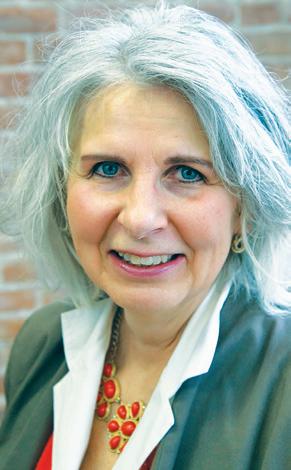
Deborah Dittner
is a family nurse practitioner and health consultant. Her mission is to transform as many individuals as possible through nutrition and lifestyle changes.
For more information, check out her website at www.debdittner. com or contact her at 518-596-8565.
Page 12 • IN GOOD HEALTH – Mohawk Valley’s Healthcare Newspaper • December 2022
Healthiest Gifts to Give Your Loved One This Holiday Season
 By Daniel Baldwin
By Daniel Baldwin
Medicines, pain relievers and skin care products, may not be at the top of anyone’s Christmas, Hanukkah or Kwanzaa lists — but they are still great holiday gifts.
Pain relievers would make great gifts for those who are dealing with pain, throughout their bodies. Chem ical-free lotions and soaps would be great gifts for those who have dry and itchy skin.
Here is a list of health products people can find or buy in the Mo hawk Valley and give to their loved ones during the holidays.
Peter’s Cornucopia is a good place to start your healthy holiday shopping, as they have been selling natural supplements, organic pro duce and health items since 1985.
Mountain Ice Pain Reliever and Gin Gin Hard Ginger Candy are the perfect health-related gifts to give to someone during the holidays, accord ing to Jenn Peters (general manager of the food health store). They are sold here at Peter’s Cornucopia.
Mountain Ice Pain Reliever
This is a local product, made in Marcy. Mountain Ice is a pain reliev er lotion that is made with natural ingredients and natural vitamins. It relieves joint and nerve pain throughout the body.
Mountain Ice also improves cir culation, reduces inflammation and promotes better muscles and joint healing, according to the company’s website (Mountain-ice.com).



Gin Gin Hard Ginger Candy
This type of candy is anti-inflam matory. It can help with stomach pains, digestion issues, cramps and nausea. It reduces the phlegm and hoarseness in a person’s throat. It re duces coughing. This candy is made with 16% fresh ginger, more than any
other brand. No artificial sweeteners. No sugar. It is America’s No. 1 selling ginger candy, according to the com pany’s website (Gingerpeople.com).

Buff City Soap is a chain store that makes and sells chemical-free plant-based soaps that are good and healthy for the skin. There is one in Dewitt, two in Buffalo, two in Roch ester, and one right here at Consumer Square in New Hartford.
Carley Green (commissary man ager at the New Hartford store) said Buff City’s Oatmeal Honey Soap is the perfect and healthiest gift to give to someone during the holidays.


Oatmeal Honey Soap
“Our oatmeal honey soap is made with oats,” Green said. “Oats are known to help rejuvenate the natural oils in your skin, so it’s rec ommended for a lot of people with any sensitive skin issues. It’s a really good-selling product. Usually, people will go with the oatmeal honey bar soap as a holiday gift. Our products and soaps are better healthier alter native to any other bath products just because it’s plant-based, all-natural and has no harsh chemicals in it.”
Evolve Gifts, in Clinton, sells the sustainable echo-friendly versions of everyday household items. From reusable food and storage bags to chemical-free cosmetics, this store has many naturally-made person al care products that would make awesome holiday gifts. They are also healthier alternatives to the normal chemically-made products we use every day. Here are a few of these products.
Elate Cosmetics
Elate Cosmetics are refillable, recyclable, and non-toxic.
Stephanie Witusik, the store owner, said that these cosmetics are
better for your skin, your body and the planet. They contain no formal dehyde, a chemical, found in most big-brand cosmetics, that has been known to cause cancer and irritate skin. Elate Cosmetics are not sold in any other store in New York state, according to Witusik.
Evolve is the only store that has them.
Natural Nail Polish
Many commercially made nail polishes contain the three toxic ingredients of formaldehyde, toluene and dibutyl phthalate. These three ingredients affect the central nervous system, irritate the skin, irritate the reproductive system and trigger asth ma, according to Beautyecology.com.
Witusik said that it is crucial for kids to not ingest or inhale these tox ic commercially-made nail polishes. If you have a child who loves paint ing their nails, then it would be best to give them Natural Nail Polish, a non-toxic nail polish that has no traces of formaldehyde, toluene and dibutyl phthalate.
Sprouting Anew’s Coffee Infused Under Eye Cream (Made



in Westmo reland)
Mass-produced eye creams con tain parabens. Parabens can disrupt hormones and change the way your body functions, according to Ewg. org. They are not something you want around your eyes. Sprouting Anew’s under eye cream has no par abens. Jojoba oil, Vitamin E, rosehip oil, grounded coffee, cocoa butter and shea butter are all the ingredi ents that are in this locally-made eye cream. This product reduces inflam mation and removes the dark circles under our eyes. It is also the perfect moisturizer for your skin.
HiBar Deodorant
Parabens and aluminum are some of the ingredients/chemicals that are in traditional big-brand deodorants. Witusik said that these ingredients are linked to cancer.
HiBar Deodorant is an all-natural deodorant that is better and healthier for your body. It contains no par abens and aluminum. It is chemi cal-free.
HiBar Solid Shampoo
Most shampoos contain many toxic ingredients that can cause hormone imbalance, cancer and even hair loss, according to Verywell health.com. HiBar Shampoo is an all-natural shampoo. It does not have any toxic ingredients. It is great for your hair and body.
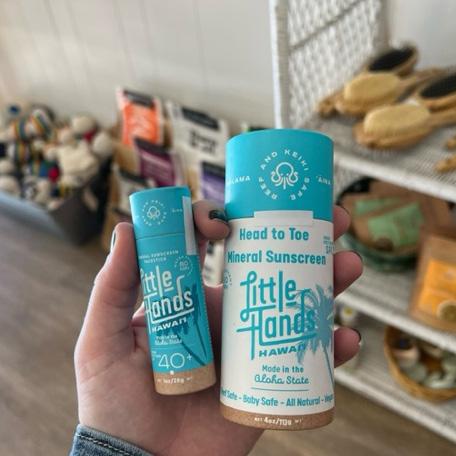
Little Hands Hawaii Natural Mineral Sunscreen
A lot of mass-produced sun screens have cancer-causing chem icals, according to Witusik. Little Hands Hawaii does not put any chemicals into their sunscreen. They instead use coconut oil, beeswax, raw shea butter and other natural ingredi ents from the Aloha State. Make sure that your loved ones are protected from the sun as well as the harmful toxic chemicals.
Clinton Honey (made in Clinton)
Clinton Honey has no added sugar, no flavor agents and no high fructose corn syrup. Witusik said that locally-made honey, like this one, is good for your body and a better al ternative to any commercially made honey.

December 2022 • IN GOOD HEALTH – Mohawk Valley’s Healthcare Newspaper • Page 13
By Barbara Pierce
The Case for Self-deception
“Knock on my door when you’re going for a walk. I’d like to go with you,” said my neighbor, Sue.
I was baffled. I didn’t know how to respond.
Ninety-one-year-old Sue strug gles to shuffle slowly behind her walker. Me, I get out there and stride along rapidly and purposefully.
“Doesn’t she see the difference between us?” I thought to myself. “However would the two of us walk together? We’re not comparable or compatible. She’s in denial about her ability!”
But then I realized I was over-thinking this way too much. It’s not about walking; she just wants us to spend time together. Being outside is beneficial in so many ways, being with another person also beneficial in so many ways. She’s wise. It’s not about walking.
And, to be honest, aren’t I also in denial, deceiving myself when I de scribe myself as striding rapidly and purposefully? In my dreams maybe!
“All people deceive themselves and quite frequently at that,” said a scientist who has studied the subject. We mislead ourselves all day long.
We tell ourselves we’re smarter and better looking than our friends, that our political party can do no wrong, that we’re never too busy to help someone in need. We overesti mate our good qualities and mini
mize our less desirable qualities.
This quote from author Margaret Halsey tells it like it is: “Whenever I dwell for any length of time on my own shortcomings, they gradually begin to seem mild, harmless, rather engaging little things, not at all like the glaring defects of other people.”
Lying to yourself — or self-de ception, as psychologists call it — actually has benefits. People with an optimistic, over confident view of themselves and of life are the happi est and healthiest.
“Happiness is grounded in radical self-delusion,” said Raymond Belliotti in his book “Happiness is Overrated.” “The happiest people have unrealistically positive views of themselves.”
Most of us think we’re better looking than we really are. When people are asked to choose the most accurate photo of themselves from an array of images that are either accurate, or altered to make them look up to more or less attractive, most choose the photo that looks 20% better than reality, research shows.
The benefit is simple. If you think you’re handsome, you project a bet ter looking you.
Overconfidence works not just on looks but in other categories.
When I worked as a supervisor doing annual evaluations of profes sionals, I read something that made a big influence on me. It said that 80% of people think they’re above average
The HIV Epidemic Is Winning
at work. 80% of employees believe themselves to be superior to others. Of course, this doesn’t compute, but I used it. I assumed the person I was evaluating believed himself to be bet ter than others and led the evaluation as though I believed it also.
I addressed any problem areas from that perspective. It never failed to make the person happy and moti vated to work better.
People tolerate horrific circum stances by deceiving themselves. Like when a friend, 54-year-old Doug Hauck of Santa Ana, California, was diagnosed with Huntington’s Cho rea. He was absolutely certain that the doctors were wrong. He refused to believe he has a disease that will destroy his ability to function and then rob him of his life.
I can see him decline. I’ve tried to help him accept that he has a seri ous disease and make plans for his future.
But he is utterly certain that I have no reason to be concerned. He goes on as he always has, tinkering on his sports cars, working as a car penter. He can’t live with the reality, so he refuses to accept it.
According to several experts, he’s right. The healthy mind is a
self-deceptive one. “At every turn, it construes events in a manner that promotes benign fiction about one’s self, the world, and the future.” said Shelley Taylor in her book, “Positive Illusions.”
“The mind is adaptive, oriented towards overcoming, rather than succumbing, to the adverse events of life,” she added.
We don’t believe we’ll be in a se rious auto accident. Why else would otherwise intelligent people tailgate at 80 miles per hour? We believe it’s the other guy who will die, not us.
Feeling pessimistic and helpless, thinking about how helpless you are to do anything about your illness, weakens your immune system. In other words, believing that you have an illness that you can’t do anything about will make that illness worse.
So, for good health and good mental health, continue to have those positive illusions about yourself. If you’re relentlessly realistic, learn to cultivate positive illusions. It will be good for your health.
Barbara Pierce is a retired licensed clinical social worker with many years of experience helping people. If you would like to purchase a copy of her book, “When You Come to the Edge: Aging” or if you have questions for her, contact her at barbarapierce06@yahoo.com.
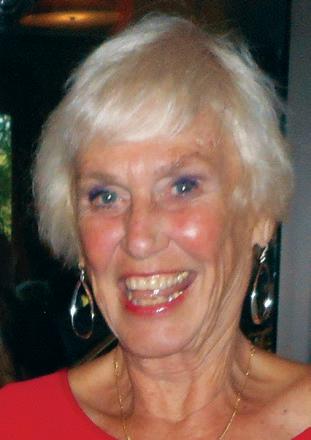 By Barbara Pierce
By Barbara Pierce
We’ve made enormous strides in HIV treatment, care and prevention since the epi demic began 40 years ago.
Then it was the leading cause of death for young people, according to the CDC. Until recently, fewer people were becoming infected with HIV. Those who did become infected are living longer and healthier lives thanks to medications.
We had almost conquered HIV/ AIDs, then the COVID-19 pandemic struck.
“Now HIV is on the increase in New York, especially in our area,” said Mary Beth Anderson, director of prevention, ACR Health, based in Syracuse, serving the Mohawk Valley, with a clinic in Utica. ACR Health is a nonprofit, communi ty-based organization providing support services to persons affected by a wide range of chronic diseases, including HIV/AIDS.
New HIV infections are now rising where they’d been falling, she explained. During the last two years
of COVID-19 and other global crises, progress against the HIV pandemic faltered and resources have shrunk.
HIV has cost us too much for too long and remains a significant public health issue here. New York state has the second-highest number of people living with HIV; California has the highest.
A recent shocking report from the United Nations has sounded alarm bells across the global health community. Aptly titled “In Dan ger,” the report outlines a backslide in progress toward ending the AIDS pandemic.
One reason for the increase is that testing and diagnosing HIV diagnoses has decreased in the US, as well as globally. Harm reduction services to people who are use drugs and are at high risk for HIV have been widely disrupted.
One of the biggest challenges in conquering HIV response has remained unchanged since it first became a threat: HIV disproportion ally affects people who are already
discriminated against. Most new HIV infections are seen in places where higher-risk groups remain unaware, underserved or neglected. This includes Black and Hispanic men, age 25 and younger, with a history of male-to-male sexual contact; a larger than expected number of high-risk individuals are transgender; drug us ers; and the partners of these groups.

Among the most important changes that caused the number of persons with HIV infections to decline was the development of medication, said Amber Nix of ACR Health. PEP, pre-exposure prophy laxis, is a medication to prevent HIV if you believe you may have been exposed. It should be used only in emergency situations and must be started within 72 hours after a recent possible exposure to HIV.
PEP needs to be taken as soon as possible after you have been ex
posed, ideally within two hours and not later than 72 hours. The sooner PEP is taken, the more likely it is to stop HIV. An emergency room is legally bound to prescribe it for you if it is right for you; a health care pro vider will talk to you about whether it is right for you.
As our attention has been fo cused on other crises these last few years, HIV has been left behind. We need to shift attention back to this crisis — now.
HIV is not an easy virus to defeat. However, the most powerful HIV prevention and treatment tools in history are now available. Areas where HIV transmission is increasing most rapidly can be identified.
By using these tools swiftly and to greatest effect, the HIV epidemic can end.
The time to act is now.
Page 14 • IN GOOD HEALTH – Mohawk Valley’s Healthcare Newspaper • December 2022
Between You & Me
One reason for the increase is that testing and diagnosing HIV diagnosis has decreased in the US
‘For good health and good mental health, continue to have those positive illusions about yourself.’
Q & A
with Stephanie Eghigian
Director of Utica-based Empowered Pathways discusses how the agency helps women to return to the workforce, and how it helps people in the going through the court system
 By David Podos
By David Podos
Q: What are the main services the agency provides?
A: Sure, well first off, we are two agencies that came together, the Women’s Resource Center on one side and with that program what we do is help women get back into the workforce, most of the women that
we serve are below the poverty line. Many are trying to transition from public assistance to employment, who need a lot of training, guidance and mentoring.
Q: So, what are the specific skills that you are teaching these women that
can help them in their quest to become gainfully employed?
A: We do everything from how to apply for applications online, and many people have difficulty with this process, we teach basic computer skills, as well as how to write a cover letter and how to construct a resume. Mock interview training with our clients is an important skill set that we teach so they are prepared once in front of a prospective employer.
Q: What agency is on the other side and what services do you provide?
A: On the other side we have Community Dispute Resolution Cen ter. Both of these agencies, The Wom en’s Resource Center as well as the Resolution Center come under the umbrella of Empowered Pathways. The Resolution Center is funded by the New York State Unified Court System to help individuals, particu larly those going through the court system but it is much more expand ed than that. So, our main focus is to help to settle their disputes in a peaceful manner outside of the court room. By settling disputes outside the court, we save the courts time and money as well as getting people to sit down and talk to one another.
Q: Can you give me some specific exam ples of what these court cases are?
A: Well, there are a wide range of cases we work with but some of the more common ones are between landlord and tenant cases or neigh bor disputes. It could be that you needed work on your house but the work provided was not up to standard or you had car repairs and the mechanic did not do the proper work for the money they charged. Often times these issues are between people who know one another and are friends. The dispute can damage a long-time friendship causing much emotional stress. So, we step in, try to solve the problem and in so doing we can often times help repair that rela tionship as well as settle the disputes for both parties.
Q: What about young adults who might have chosen an unlawful path to fol low? What can mediation do for them?
A: We do parent teen mediation as well as grandparent teen media tion. Our staff is trained in restorative
practices and restorative circles. For instance, if a teen has harmed an other family member (and this is not always physical harm). For example, it can be that a teen has stolen money from a family member or they are using drugs in the house and will not stop or it could be that they suddenly stopped going to school. We often can bring the family together for a team meeting where all sides are heard to come up with a plan to help everyone and solve any issues.
Q: I’m assuming that your team fre quently deals with what we would call “really bad” cases where there has been severe emotional damage within the family where a mediation is des perately needed to solve problems and bring some healing to the family.
A: Yes, that is true. But I want to be clear on this — what we do is not a replacement for family counseling. Rather what we provide is an addi tion or adjunct to family counseling.
Q: Are there any other services/pro grams you provide?
A: Yes, we do, it is called Surro gate Decision-Making Committee Program. This program helps make medical decisions for people who have intellectual disabilities, who don’t have the capacity to make those decisions on their own. This program is a volunteer-based operation.
Q: How many staff do you have?
A: We have a total of eight staff, seven full-time, one part-time. In addition, we have a volunteer pool of 15 certified mediators.
Q: What is your annual operational budget?
A: It’s about $500,000.
Q: Where does Empowered Pathways receive funding from?
A: We receive funding from sev eral sources. New York State Unified Court System is where we receive most of our funding from. We also receive money from the New York State Department of Labor, as well as funding from Oneida County.
To contact Empowered Path ways, call-315-724-1718 or visit EmpoweredPathwaysCNY.org
head of a winter that will see colder than usual weather across most of the country, according to the latest forecast from the Old Farmer’s Almanac, the per sonal-finance website WalletHub re cently released its 2022’s Best Winter Holiday Destinations report, as well as accompanying videos and expert commentary.
Focusing on cost and conve nience rather than scenic beauty, WalletHub compared nearly 70 of the largest U.S. metro areas grouped by warm and cold weather. Each desti nation was analyzed based on 37 key metrics, primarily the expense and hassle of traveling to each location but also on other indicators, such as weather forecasts, safety and variety of activities.
Here’s a quick glimpse at some of the report’s most interesting find ings:
• Among cold destinations, Omaha, Nebraska, has the lowest price for a three-star hotel room, $55, which is 2.4 times lower than Worcester, Massachusetts, the city with the highest at $133.
• Among warm destinations, Houston has the lowest price for a three-star hotel room, $40, which is 5.2 times lower than Honolulu, the city with the highest at $208.
• Among warm destinations, Orlando has the most restaurants (per square root of population), 7.281483, which is 29.0 times more than in Deltona, Florida, the city with the fewest at 0.250773.
• The average flight to a popular cold winter destination costs $396.17, lasts 3 hours and 30 minutes and has 0.28 connections. In comparison, the average flight to a popular warm winter destination costs $521.74, lasts 5 hours and 17 minutes and has 0.57 connections.
To view the full report and your metro area’s rank, visit: wallethub.com/edu/ best-winter-holiday-destinations/7930
December 2022 • IN GOOD HEALTH – Mohawk Valley’s Healthcare Newspaper • Page 15
Best Destination for Winter Travel A
Best Cold Destinations for Winter Travel 1. New York City 2. Atlanta 3. Washington 4. Chicago 5. St. Louis 6. Cincinnati 7. Kansas City 8. Boston 9. Albuquerque 10. Philadelphia Best Warm Destinations for Winter 1. Las Vegas 2. Austin 3. San Diego 4. Dallas 5. San Antonio 6. Phoenix 7. Houston 8. San Francisco 9. Los Angeles 10. Charleston
Respiratory Syncytial Virus 101
RSV is not a new disease, but it’s hitting hard and early this year
By Eva Briggs, M.D.
Many of my patients have been confused about RSV lately.
RSV is short for respiratory syncytial virus.
Respiratory because it infects the airways. Syncytial comes from the fusion of infected cells to form what is called syncytia. These are giant cells with several nuclei.
Virus is just that — a virus, not a bacterium. This means that antibiot ics have no effect on RSV.
RSV is not a new disease, but it’s hitting hard and early this year. The theory is that all the masking and social distancing of the past several
years prevented many RSV infections and the virus is now making up for lost time. More people, especially young kids, are vulnerable because they had no exposure to develop im munity during the past few years.
Your respiratory system is some thing like a tree. The upper airway (nose, mouth, and throat) funnels air into your trachea, which is like the tree’s trunk. The trachea branches first into two main stem bronchi, one to each lung. The mainstem bronchi branch into smaller bronchi, which in turn branch into still smaller airways called bronchioles, which lead to the
Excellus Awards Grants to Address Maternal Health Disparities
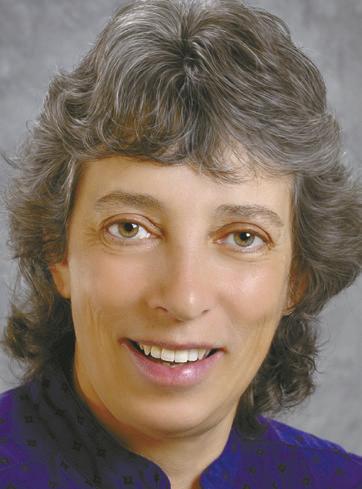
Excellus BlueCross BlueShield recently announced the first round of recipients of Member and Community Health Improve ment (MACHI) grants to improve maternal health and health equity in Upstate New York. Eight nonprofit organizations in the health plan’s 39 county service area will share $1 mil lion in grant funding over the next three years.
Among the recipients are Mo hawk Valley Health System (MVHS) and Integrated Community Alterna tives Network (ICAN).
Funds will support Mohawk Val ley Health System’s CenteringPreg nancy program and ICAN’s Maternal Health Equity for Pregnant Homeless Teens program.
“We have an opportunity and a responsibility to confront the nation’s crisis in maternal health disparities,” says physician Gina Cuyler, Excellus BCBS vice president of health equity and community investments. “With this first installment of award fund ing, community organizations will have greater capabilities to support safe pregnancies and childbirth, eliminate pregnancy-related health disparities, and improve health out comes for new mothers and babies.”
Black, Latina, and Asian women have higher rates of severe mater nal morbidity (defined by the U.S. Centers for Disease Control and Prevention as “unexpected outcomes of labor and delivery that result in
tiny air sacs called alveoli.
RSV can affect any part of the airway. In the upper airway it can cause a runny nose with prodigious quantities of mucus. It has a propen sity to infect the bronchioles, causing an illness called bronchiolitis. It can even infect the alveoli to cause viral pneumonia. Even though it is pneu monia, it’s still a viral pneumonia and antibiotics won’t cure it.
The bronchioles of infants and small children are tiny. When they fill with mucus due to RSV infection, it becomes hard for air to flow through. The result is wheezing and the need to use extra muscles get the air in and out of the lungs.
Even though there is wheezing, the mechanism is different from the wheezing due to asthma. Wheez ing in bronchiolitis often does not respond to nebulized medicine, like albuterol, or to steroids. Those are the mainstays to treat acute wheezing due to asthma. Guidelines recom mend against their use in bronchi olitis. Because medicine is an art as well as a science, some clinicians will try albuterol on children wheezing due to RSV.
It’s possible to diagnose RSV from a nasal swab. In my opinion, that test isn’t much help for children not sick enough to be hospitalized. Other viruses can also cause bronchi olitis and severe respiratory symp toms. So it’s important to treat the child’s illness regardless of whether it’s due to RSV or some other virus. There is no specific medicine to treat non-hospitalized patients with RSV. A sick child is contagious regardless of their RSV status and should be kept away from vulnerable people. So, RSV testing does not change the treatment.
The other people most at risk of serious illness from RSV are older adults and immunocompromised individuals.
The most important things parents can do for a baby with RSV are keeping the baby’s nose clear of mucus and trying to keep the child
hydrated. Because babies breathe through their noses, it’s important to keep clearing their noses, whether it’s with the old standard bulb syringe or with a more advanced device such as the Nose Frieda. It’s a myth that formula or milk will cause the mucus to become thicker so don’t withhold it. Sick children need calories to fight infection. Treating fever with acet aminophen or ibuprofen will make your child more comfortable. There is no need to withhold these medicines if you bring your child in for medical care.
RSV tends to get worse for about five days before it starts to resolve. Some children do become sick enough to require emergency treat ment despite their caregiver’s best efforts. Signs that indicate a child needs emergency treatment:
• Rapid or labored breathing. Watch for “belly breathing” and for retractions where the chest becomes sucked in below the ribs, between the ribs, and/or above the collar bones. There are you tube videos that show what labored breathing looks like.
• Skin turning blue. This is usu ally most visible around the lips or the fingernails.
• Dehydration. Dehydrated chil dren have few wet diapers and may not be taking in fluids well.
• Lethargy or unresponsiveness.
Even with good care, 1% - 2 % of children younger than 1 year old who contract RSV will require hospi talization for treatment with oxygen and other modalities.
significant short- or long-term conse quences to a woman’s health) (SMM) than White women, regardless of age or type of health insurance, accord ing to a recent study of racial and ethnic disparities in maternal health issued by the Blue Cross Blue Shield Association.
The study also revealed that preexisting health conditions going into delivery, such as hypertension, diabetes, or asthma, strongly cor relate with higher SMM and worse pregnancy complications, increasing the likelihood of a risky delivery or challenges postpartum. While wom en ages 35-44 across all populations were identified as most likely to have an SMM event, the study found that Black women in this age range have a 66% higher rate of SMM and are more likely to suffer pregnancy-relat ed complications than White women.
“The CenteringPregnancy pro gram provides an innovative, evi dence-based model of group care that effectively addresses the complex social needs of pregnant women,” said Patricia Charvat, senior vice president of marketing and strategy at MVHS. “We are so appreciative to Excellus BCBS for this grant which will help us expand the Centering Pregnancy program to more women
in our community who have difficul ty accessing prenatal care.”
ICAN CEO/Executive Director Steven Bulger shares, “We are grate ful to Excellus for supporting our im pactful work with young, homeless women who are pregnant and/or parenting and addressing the overall health and well-being of each of our 24/7 residents. We will offer inno vative, comprehensive prenatal and postpartum care, transitional hous ing, and a supportive peer communi ty as well as service coordination and connection to community partners.”
The eight nonprofit organizations across the health plan’s 39 county service area that will receive funding, are:
Child & Family Resource Center Inc., Contact Community Services, Gerard Place, Integrated Community Alternatives Network (ICAN), Jeri cho Road Community Health Cen ter, Mohawk Valley Health System, Mothers & Babies Perinatal Network, and Mount Hope Family Center.
“The grants we announced today will provide needed funding to orga nizations that are working to address these issues,” says Cuyler.
Page 16 • IN GOOD HEALTH – Mohawk Valley’s Healthcare Newspaper • December 2022
Eva Briggs is a retired medical doctor who practiced in Central New York for several decades. She lives in Marcellus.
Nonprofits to share $1 million in grant funding
By Jim Miller
Top 5 Financial Scams Targeting Seniors Today
Dear Savvy Senior,
What are the most common scams today that target elderly seniors? My 75-year-old mother has been swindled several times over the past year, so I’m being extra cautious.
— Paranoid Patty
Dear Patty,

Great question! While many scams today are universal, there are certain types of fraud that specifically target older adults or affects them disproportionately. Unfortunately, these senior targeted scams are on the rise.
According to the Federal Bureau of Investigation (FBI), in 2021 there were 92,371 older victims of fraud resulting in $1.7 billion in losses. This was a 74% increase in losses com pared to 2020.
Here are five of the most common senior scams that were reported last year, that both you and your mom should be aware of.
1. Government imposter scams: These are fraudulent telephone calls from people claiming to be from the Internal Revenue Service, Social Security Administration or Medi care. These scammers may falsely tell you that you have unpaid taxes and threaten arrest or deportation if you don’t pay up immediately. Or they may say your Social Security or Medicare benefits are in danger of being cut off if you don’t provide personal identifying information. They may even “spoof” your caller ID to make it look like the govern ment is actually calling.
2. Sweepstakes and lottery scams: These scams may contact you by phone, mail or email. They tell you that you’ve won or have the potential to win a jackpot. But you need to pay a fee or cover taxes and processing fees to receive your prize, perhaps by prepaid debit card, wire transfer, money order or cash. Scammers may even impersonate well-known sweepstakes organizations, like Pub lishers Clearing House, to fool you.

3. Robocalls and phone scam: Robocalls take advantage of sophisti cated, automated phone technology to carry out a variety of scams on trusting older adults who answer the phone. Some robocalls may claim that a warranty is expiring on their car or electronic device, and payment is needed to renew it. These scam mers may also “spoof” the number to make the call look authentic.
One common robocall is the “Can you hear me?” call. When the older person says “yes,” the scammer
records their voice and hangs up. The criminal then has a voice signature to authorize unwanted charges on items like stolen credit cards.
4. Computer tech support scams: Theses scams prey on senior’s lack of knowledge about computers and cybersecurity. A pop-up message or blank screen usually appears on a computer or phone, telling you that your device is compromised and needs fixing. When you call the sup port number for help, the scammer may either request remote access to your computer or that you pay a fee to have it repaired.
5. Grandparent scam: The grand parent scam has been around for several years now. A scammer will call and say something along the lines of: “Hi Grandma, do you know who this is?” When the unsuspecting grandparent guesses the name of the grandchild the scammer most sounds like, the scammer has established a fake identity.
The fake grandchild will then ask for money to solve some unexpect ed financial problem (legal trouble, overdue rent, car repairs, etc.), to be paid via gift cards or money trans fers, which don’t always require identification to collect.
Other Scams
Some other popular scams targeting older adults right now are romance scams through social media and online dating sites, COVID-19 scams, investment scams, Medicare and health insurance scams, and Internet and email fraud.
For more information on the different types senior scams to watch out for, along with tips to help your mom protect herself, visit the Na tional Council on Aging website at NCOA.org, and type in “the top 5 fi nancial scams targeting older adults” in the search bar.
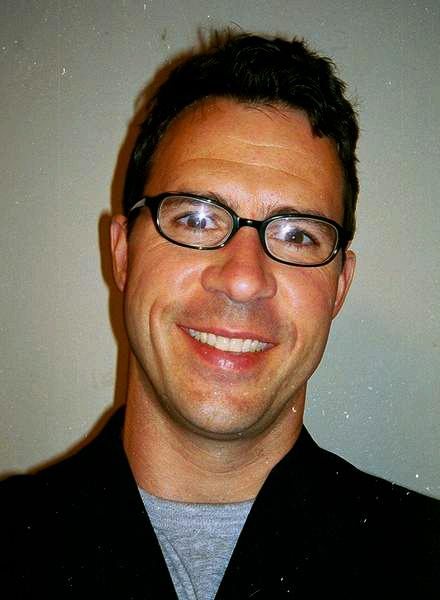
Send your senior questions to: Savvy Senior, P.O. Box 5443, Norman, OK 73070, or visit SavvySenior. org. Jim Miller is a contributor to the NBC Today show and author of “The Savvy Senior” book.
Give it a Shot
What You Need to Know About Adult Vaccines
By Kimberly Blaker
When it comes to health, pre vention is the best medicine. Many avoidable diseases can cause extensive damage to our health, especially as we age or for those with other medical conditions or a weakened immune system.
While many preventable illnesses are treatable, they can nonetheless result in lasting complications. So getting vaccinated against certain diseases is vital to prevent these illnesses from taking hold in our bodies. We all know vaccinations are standard during childhood, but adults need immunizations, too.
However, adults require differ ent protections or may need booster shots to ensure the vaccines they received in the past remain effective.
The goal of vaccines is to re duce your chance of infection by developing immunity through your body’s natural defense system. When bacteria or viruses get into your body, they reproduce and attack your system. Your body’s immune system has various approaches to fight off this infection. For example, white blood cells can learn how to protect your body from particular germs that you’ve been vaccinated against.
The way this works is vaccines use a small amount of the particular virus or bacteria and introduce it into your system. The antibodies then learn how to fight off the germs in the event you encounter them in a larger quantity. For this reason, you may have a slight reaction to the vac cine, such as a fever, while your body works to fight it. Still, this is very mi nor compared to the complications of getting a preventable disease. There are many types of vaccines, and each can interact with your body differ ently. Some vaccines require multiple doses or else a booster later on to rebuild your immunity levels.
Some individuals are unable to get.
What vaccines do older adults need?
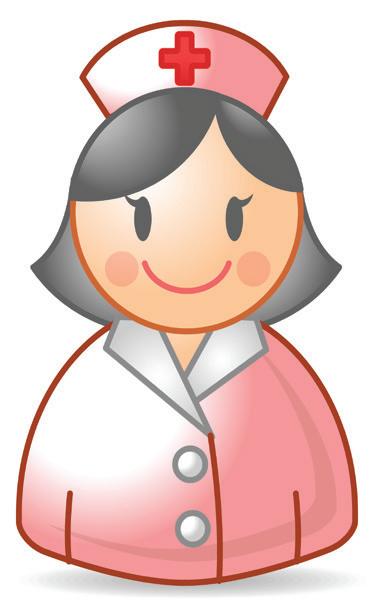
The vaccines recommended in adulthood offer yearly protection, are recommended for specific life or health situations or are boosters to
keep your childhood vaccinations working effectively.
Every individual has different medical needs, but common adult immunization recommendations include:
• Influenza: The flu shot is recom mended yearly for every person old er than 6 months, especially for those at higher risk due to a weakened immune system, medical conditions or close contact with those at risk for the flu.
• Tetanus, Diphtheria, and Pertus sis (Tdap): The initial Tdap shot is currently given once, usually around the age of 11-12. Boosters are recom mended every 10 years after that, especially if you come in contact with pregnant women or young infants.
• Measles, Mumps, Rubella (MMR): If you were born before 1957, you are likely immune from MMR. If you were born after 1957 and don’t have evidence of immunity, this vaccina tion is recommended, especially if you travel internationally. However, if you have a weakened immune system, it is not recommended.
• Recombinant Zoster (RZV): The Zoster vaccine is the currently pre ferred shot to prevent shingles. It’s especially recommended for those 50 or older since the risk and the likeli hood of complications from shingles increases with age. Even if you’ve had shingles, you can get it again, so the vaccine is still recommended.
• Pneumococcal Polysaccharide (PPSV23): This vaccine is for pneumo coccal diseases like meningitis and bloodstream infections. It’s recom mended for everyone 65 and older and for younger individuals with certain health conditions.
• Pneumococcal Conjugate (PCV13): This immunization also works to prevent pneumococcal disease and pneumonia for those with conditions that weaken their immune system.
The CDC offers a vaccine as sessment tool to help you determine which vaccines you may need based on your own personal factors such as age or health conditions. The best way to make sure you are up to date on immunizations is to discuss your medical history and needs with your doctor.
December 2022 • IN GOOD HEALTH – Mohawk Valley’s Healthcare Newspaper • Page 17
Highest Prices Paid We BUY TEST STRIPS We will pick up and pay on the spot We pick up 6 days a week. 11am to 6:30pm One Touch Ultra & Freestyle Lite. All Brands Considered. Up to $50. (585)-284-3455
•
WELLNESS SERVICES OFFERED:
•
• Integrative Prevention & Wellness
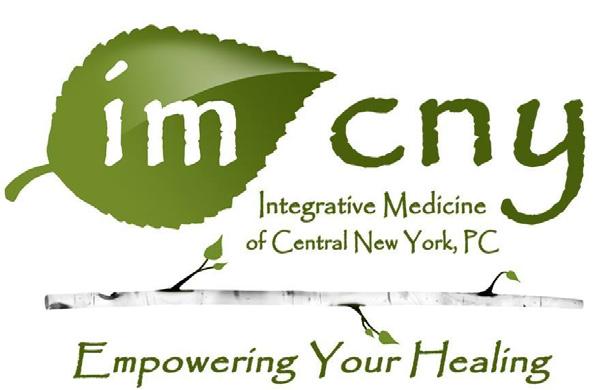
• Mold Related Illness
• Oral & IV Nutraceuticals
• European Mistletoe
• Helleborus niger
• Women’s Health
• Endocrine Health
• Neurofeedback
patientsaccepting 9 & older
• HeartMath
• Reiki & Pranic Healing
• Integrative Nutrition Holistic Health Coaching
• Medical Marijuana & Medical Grade CBD
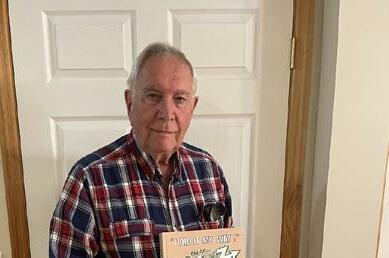
Social Security Benefits to Increase in 2023
Approximately 70 million Americans will see an 8.7% increase in their Social Securi ty benefits and Supplemental Secu rity Income (SSI) payments in 2023. On average, Social Security benefits will increase by more than $140 per month starting in January.
Federal benefit rates increase when the cost-of-living rises, as mea sured by the Department of Labor’s Consumer Price Index (CPI-W). The CPI-W rises when inflation increases, leading to a higher cost-of-living. This change means prices for goods and services, on average, are high er. The cost-of-living adjustment (COLA) helps to offset these costs.
We will mail COLA notices throughout the month of December to retirement, survivors and dis ability beneficiaries, SSI recipients and representative payees. But if you want to know your new benefit amount sooner, you can securely obtain your Social Security COLA no tice online using the message center in your personal my Social Security account. You can access this infor mation in early December, prior to receiving the mailed notice. Benefit amounts will not be available before December. Since you will receive the COLA notice online or in the mail, you don’t need to contact us to get your new benefit amount.
If you prefer to access your COLA notice online and not receive the mailed notice, you can log in to your personal my Social Security account to opt out by changing your preferences in the message center.
You can update your preferences to opt out of the mailed COLA no tice, and any other notices that are available online. Did you know you can receive a text or email alert when there is a new message waiting for you? That way, you always know when we have something important for you — like your COLA notice. If you don’t have an account yet, you must have created one by Nov. 15, 2022 to receive the 2023 COLA notice online.
“Medicare premiums are going down and Social Security benefits are going up in 2023, which will give seniors more peace of mind and breathing room. This year’s sub stantial Social Security cost-of-living adjustment is the first time in over a decade that Medicare premiums are not rising and shows that we can provide more support to older Amer icans who count on the benefits they have earned,” Acting Commissioner Kilolo Kijakazi said.
January 2023 marks when other changes will happen based on the increase in the national average wage index. For example, the maximum amount of earnings subject to Social Security payroll tax in 2023 will be higher. The retirement earnings test exempt amount will also change in 2023.

Be among the first to know! Sign up for or log in to your personal my Social Security account today. Choose email or text under “message cen ter preferences” to receive courtesy notifications.


Q: I got married and I need to change my name in Social Security’s records. What do I do?
A: If you change your name due to marriage or for any other reason, you’ll need to report the change and get a corrected Social Security card with your new name. You will need to fill out Form SS-5. You can get a copy of this form by visiting www.ssa.gov/ss5doc or by calling our toll-free number 1-800-772-1213 (TTY 1-800-325-0778). You’ll also need to provide the original marriage certificate showing your new and old names. You can mail or take the documentation to your local Social Security office. In some cases, we may need other forms of documen tation as well. For more information, visit www.ssa.gov/ssnumber.
Q: Is it true I must now receive my ben efits through direct deposit?
A: Anyone applying for bene fits on or after May 1, 2011, will be required to receive their payments electronically. Paper checks will no longer be an option for most people. If you don’t have a bank account, you can get your benefits through the Direct Express debit MasterCard. Switching from checks to electronic payments is fast, easy and free at www.godirect.org. You also can call the U.S. Treasury Processing Center’s toll-free helpline at 1-800333-1795, speak with a bank or credit union representative, or contact Social Security for help.
Page 18 • IN GOOD HEALTH – Mohawk Valley’s Healthcare Newspaper • December 2022 Ask
Social
The Social Security
Q&A Don’t Miss the Latest Issue of 55 Plus ! Issue 102 December 2022 / January 2023 For Active Adults in Central New York cny55.com NEW LIFE Congressman John Katko discusses bipartisanship, leaving Congress, his relationship with former president Donald Trump — and what’s next for him SURE BET: 8 PURCHASES RETIREES ALMOST ALWAYS REGRET FORMER SYRACUSE NEW TIMES PUBLISHER ART ZIMMER STILL GOING... AND GOING P. 44 COVER - FINAL-FINAL.indd 1 11/14/22 3:00 PM NAME ADDRESS CITY/TOWN STATE ZIP 1 YEAR (12 ISSUES) $21.00 $35.00 2 YEARS (24 ISSUES) 4 Riverside Dr., Ste. 251 • Utica, NY 13502 Hello. I’d like to subscribe to 55 Plus, the only magazine celebrating life after 55 in Central New York, and have it delivered to my door. Payment is enclosed. SPECIAL SELECT FEATURES Fall foliage is still happening: local experts suggest places to go Silver tsunami: by 2030, all boomers will be over 65 Budgeting for and during retirement; how to create budget that works Why retirees are returning to work? and much more. Now
From the
Security District Office
Office
Integrative Oncology
Lyme Disease Treatment
Integrative
–TE L EMED I
I NE A V AILA B L E
C
Heidi S. Puc, MD,FACP, ABIHM Heidi Baldwin, MS, RMT
Jennifer Kohler, MS, FNP-BC, CLC
Excellus Awards Oneida Health Behavioral Health Grant
Excellus BlueCross BlueShield in partnership with Oneida Health announced the Excellus BlueCross BlueShield Member and Community Health Improvement (MACHI) grant to support increased access to behavioral health services at Oneida Health.

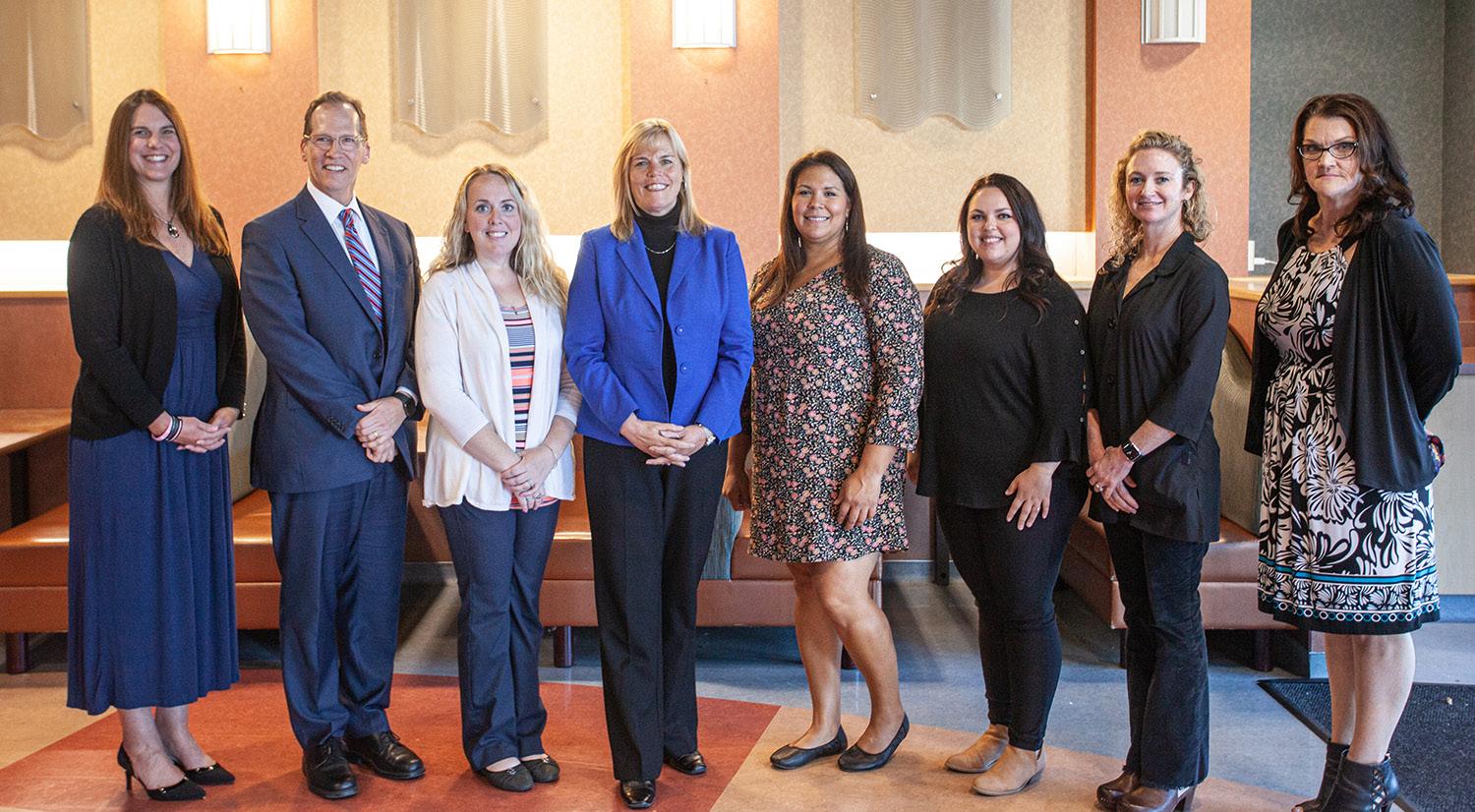
The grant will award $150,000 over a three-year period to establish services to address mental health, substance abuse, or age-specific women’s behavioral health con ditions of Oneida Health patients receiving care at its Women’s Health practice, Lullaby Center, or Emergen cy Department (ED).
The Member and Community Health Improvement (MACHI) grant program provides funding to local, nonprofit organizations that share Excellus BlueCross BlueShield’s vi sion for healthier communities. These multi-year grants support initiatives with specific objectives and measur able outcomes for improving health. The company’s corporate giving follows all applicable laws and regu lations and does not support funding organizations that conflict with its corporate mission, goals, policies, or products.
“Providing access to high-quality health care is core to our mission as a nonprofit health plan,” said Eve Van de Wal, regional president of Excellus BlueCross BlueShield. “We are excit ed to partner with Oneida Health to support this vital behavioral health program that addresses the needs of our region by increasing access to mental health and substance use services.”
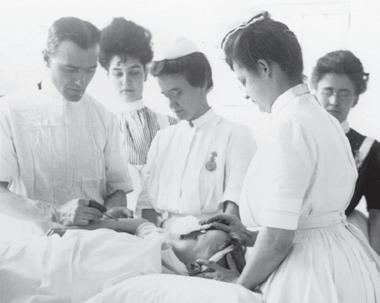

The new Women’s Care Coor dination Program at Oneida Health is primarily designed to bridge the gap between patients and access to mental health and substance abuse treatment services through a care-co ordinated model. With a single point
of contact, patients will now be able to receive coordinated care to a range of community resources and services that are available for women includ ing but not limited to; mental health and substance abuse counseling, bereavement support, transportation, domestic violence advocacy, care management, and other community services that promote overall health and wellness.
“The COVID-19 pandemic has exacerbated the mental and behav ioral health crisis we are facing in our communities,” said President and CEO Jonathan Schiller. “The need for coordinated behavioral health services has never been greater and represents a significant clinical health improvement priority for our med ical staff and clinical team. Through the support provided by Excellus BCBS, we will be able to connect a critical network of services and resources that already exist within our communities to improve the out comes and lives of our patients.”
With this program in place, Oneida Health aims to increase depression screenings for maternity and gynecological patients by 70% and to reduce return ED visits of those presenting with behavioral and mental health conditions by 17%.
Achievement of these initiatives will drive early detection and treatment of behavioral health conditions and reduction in unnecessary return visits to the ED which may result in long-term hospitalization and more comprehensive care.
“We thank Excellus BCBS for their shared vision in addressing opportunities to improve the overall health of our communities,” said Schiller. “This program would not be possible without their support.”
For more information about Oneida Health, please visit oneida health.org.
December 2022 • IN GOOD HEALTH – Mohawk Valley’s Healthcare Newspaper • Page 19 Health News REACH 60,000+ HEALTH-CONSCIOUS READERS IN ONEIDA, HERKIMER AND MADISON Advertise in In Good Health: MV’s Healthcare Newspaper and reach more than 60,000 healthconscious readers in the region. Call 315-749-7070 or email editor@MVhealthnews.com
From left: Shayna Keller, Excellus BCBS community investments and partnerships; Jonathan Schiller, Oneida Health president and CEO; Stephanie Watkins, Oneida Health women’s health/ob care coordinator; Eve Van de Wall, Excellus BCBS regional president, Eileen Kilgore, RN, Oneida Health practice manager; Taylor Duell, RN, Oneida Health clinical coordinator at Women’s Health; physician Krislyn Flint, medical chairwoman of Oneida Health OB/GYN department; Kate Trombley, Oneida Health Foundation director.
YOUR
LEGACIES ARE BUILT. For over 100 years, Bassett has been a pioneer in delivering innovative care and fostering healthy rural communities. JOIN OUR TEAM bassett.org/careers
BUILD
LEGACY WHERE
‘RISE-ing’ to Help Refugees and Immigrants Find Healthcare
By Norah Machia
It’s challenging enough for refugees and immigrants to access healthcare in the United States if they don’t speak the English language. What makes it even more difficult are the cultural differences that many face when they settle in this country.
In Onondaga County, a program has been breaking down those barriers and making it possible for refugees and immigrants to successfully navigate the system and obtain much-needed health care services for themselves and their families.
The care management program is one of several services offered through the RISE (Refugee & Immigrant Self-Empowerment) agency in Syracuse. The agency’s mission is to advocate and promote self-sufficiency in the areas of employment, education, social support and healthcare.
Refugees and immigrants from numerous countries, including Somalia, Nepal, Bhutan, Congo, Tanzania, Burundi, Afghanistan, India, Sudan, Myanmar, Iran and Iraq, along with many others, are served by the agency. Approximately 90% of the RISE staff is former refugees and immigrants themselves. Collectively, they speak more than 29 languages.
“We’re like a nation within a nation,” said RISE director of care management Zeeshan James. “It’s refugees and immigrants helping each other.”
That’s been the key to success in addressing the physical and behavioral healthcare needs of clients, he said.
“It means a lot to them to have someone who not only speaks their language, but understands their culture,” said James, a former banker from Pakistan.
Since the staff has a unique understanding of the population they serve, “everyone who works at the agency goes the extra mile to help,” he said. “It’s very rewarding work for them.”
The RISE Care Management Program focuses on coordinating healthcare services for those with two or more chronic conditions, such as asthma, heart disease, diabetes, obesity and/or mental health conditions, such as depression or anxiety and substance abuse disorders. Those who have specific conditions, such as HIV or a serious mental health illness, also qualify for help based on that one diagnosis.
The program serves refugees and immigrants receiving Medicaid or Medicare coverage and who have experienced other challenges such as inadequate housing, a lack of access to food or transportation, difficulty
in adhering to treatments and medications and/or a lack of social or family support.
“It’s more than just being able to speak a language,” James said.
It’s also about understanding how cultural difference contributes to the challenges faced by many refugees and immigrants. For those who are newly arrived in the country, the healthcare system often appears to be a very complex and confusing one.
In fact, one of the first things they teach clients is not to call 911 unless it’s a true emergency, he explained. For many, they do not realize being taken by ambulance and receiving care at a hospital’s emergency department will result in a costly medical bill.
“We teach them how to get primary care to address their chronic diseases,” James said. “We walk them through the process and eventually they graduate from the program. Although they can re-enroll in the future if necessary.”
The agency helps to connect clients with primary care providers in the community who can monitor their health and coordinate health home services, resulting in unnecessary trips to the hospital. Appointments with primary care providers can be set up, transportation provided and an interpreter offered to accompany the patient to the visit.
The staff may also connect clients to nearby pharmacies for
Coordination Network and Health Home Upstate New York, both in Syracuse.
They also work with managed care organizations, including Molina, Fidelis and United Health Care.
“We have helped many people develop a better understanding of the medical system in this country,” and make health care more accessible to those from disadvantaged communities because of their success in breaking down the barriers to care,” he said.
Refugees and immigrants
enrolled in the care management program may also be referred to other services offered by the RISE agency, such as employment assistance (they have successfully helped to place job applicants at businesses such as Amazon and Walmart). English as a Second Language classes are also available through the agency. The entire staff at RISE work together to meet all the needs of each client, James said.
“Ideally, our clients and their families will receive support in the many other areas of their lives apart from their healthcare,” he said.
How to Contact RISE
their prescription needs or help to arrange for specialized services, such as physical therapy. If the clients are unable to care for themselves, the agency will train a family member to help provide care.
Since the RISE staff is both linguistically and culturally sensitive to their clients, it helps to build trust and makes it easier for refugees and immigrants to ask for help, said James.
The nonprofit agency collaborates with St. Joseph’s Care
The Syracuse office of RISE (Refugee & Immigrant Self-Empowerment) serves refugees and immigrants throughout Onondaga County and has two locations in Syracuse: Northside: 710 Kirkpatrick St., and Southside: 302 Burt St. The agency recently started a care management program in Buffalo to serve refugees and immigrants in Niagara and Erie counties.
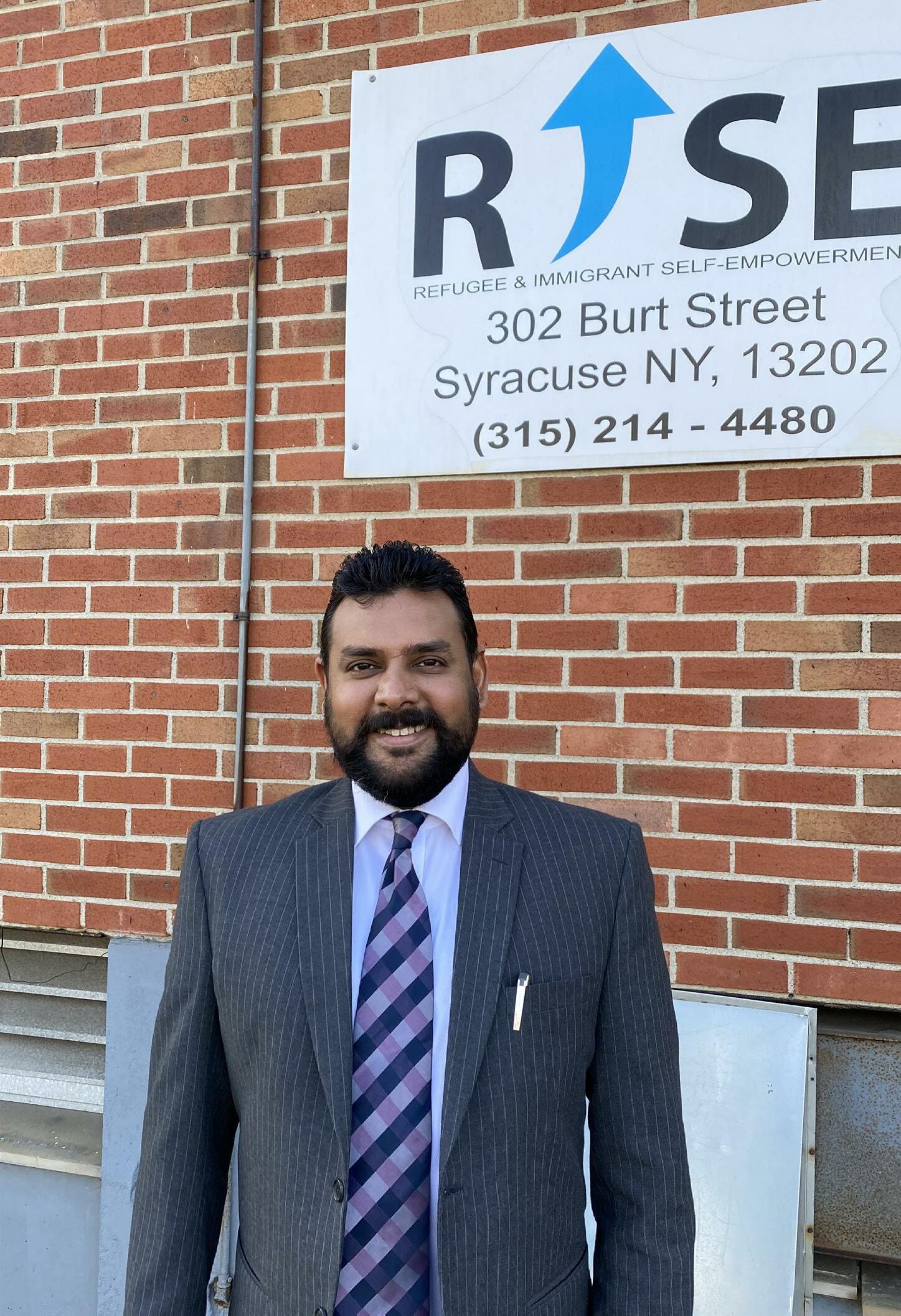
For more information on the agency’s services or to offer support, call 315214-4480 or email info@ refugeeandimmigrant. orgThose needing assistance with health care needs may contact James directly at 315322-9007 or at zeeshan@ refugeeandimmigrant.org
The agency’s website is www.refugeeandimmigrant. org
Page 20 • IN GOOD HEALTH – Mohawk Valley’s Healthcare Newspaper • December 2022
Zeeshan James, a former banker from Pakistan, is the director of care management at RISE. “It means a lot to them to have someone who not only speaks their language, but understands their culture,” he says as he refer to immigrants and refugees who get help through RISE. The agency serves 1,840 individuals and 800 families. The care management program serves more than 280 individual clients and their families.
Approximately 90% of the RISE staff is former refugees and immigrants themselves. Collectively, they speak more than 29 languages.
refugees and — immigrants navigate health system
Program in Syracuse helps











































 By Daniel Baldwin
By Daniel Baldwin











 By Barbara Pierce
By Barbara Pierce

 By David Podos
By David Podos














